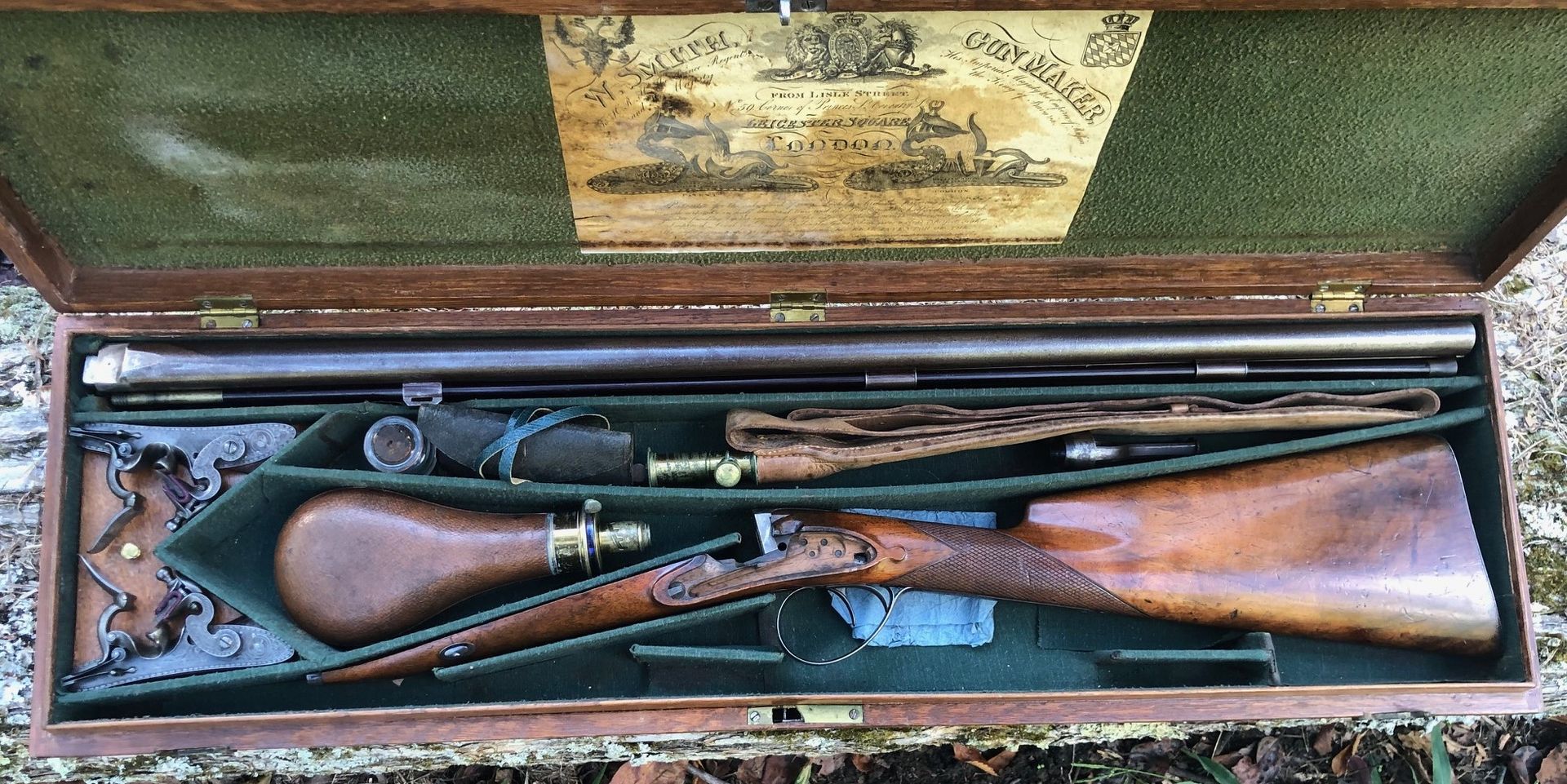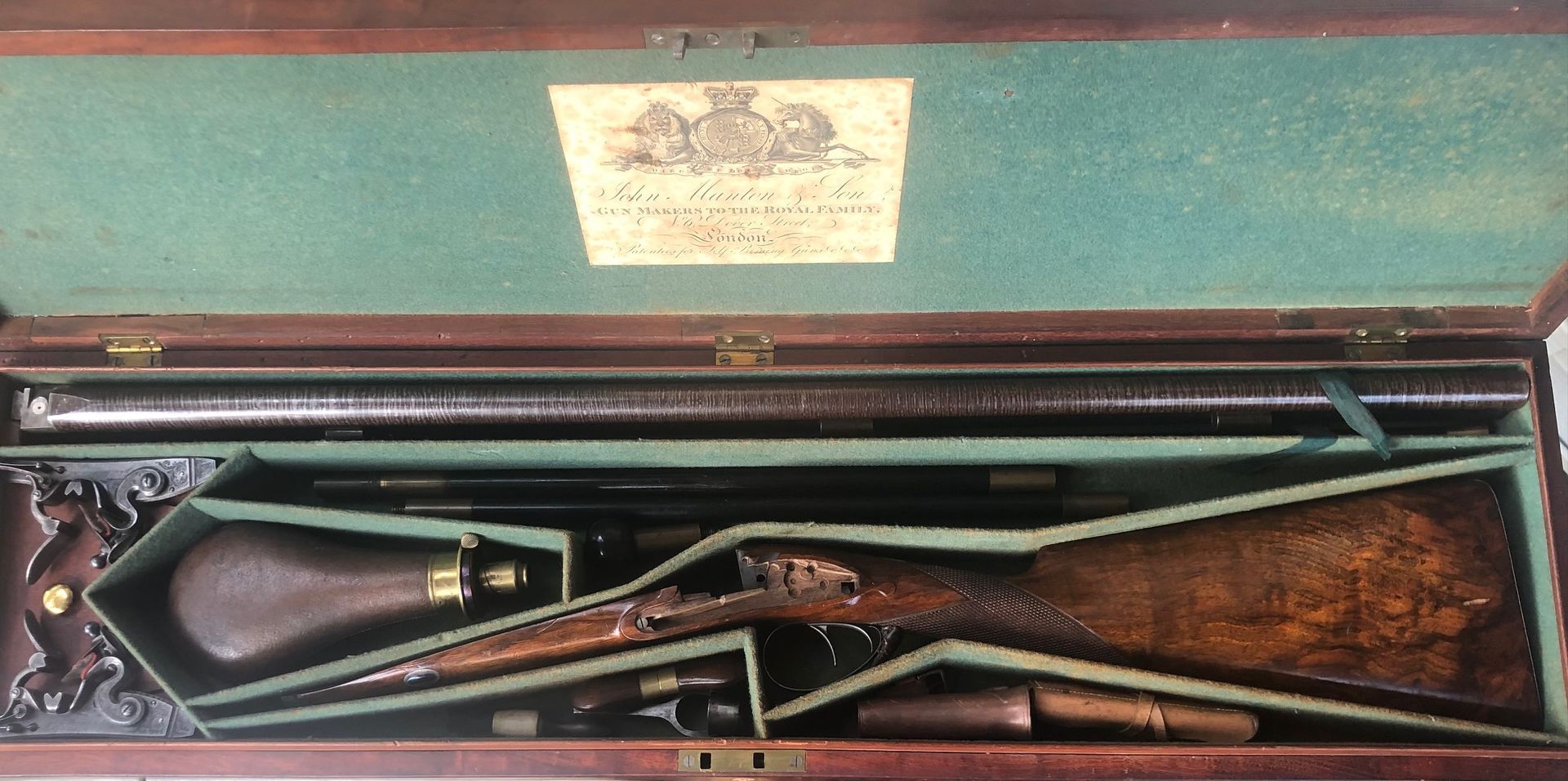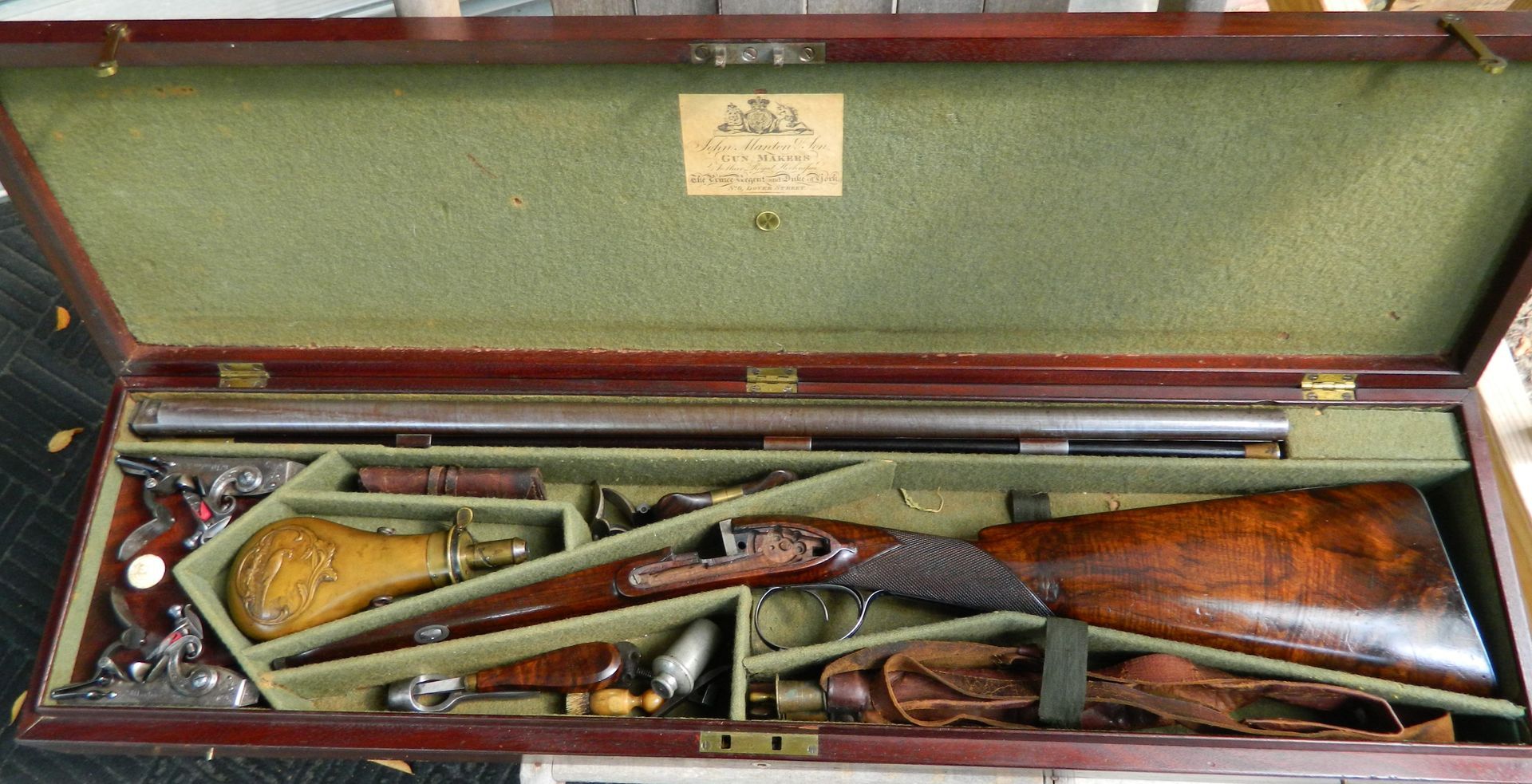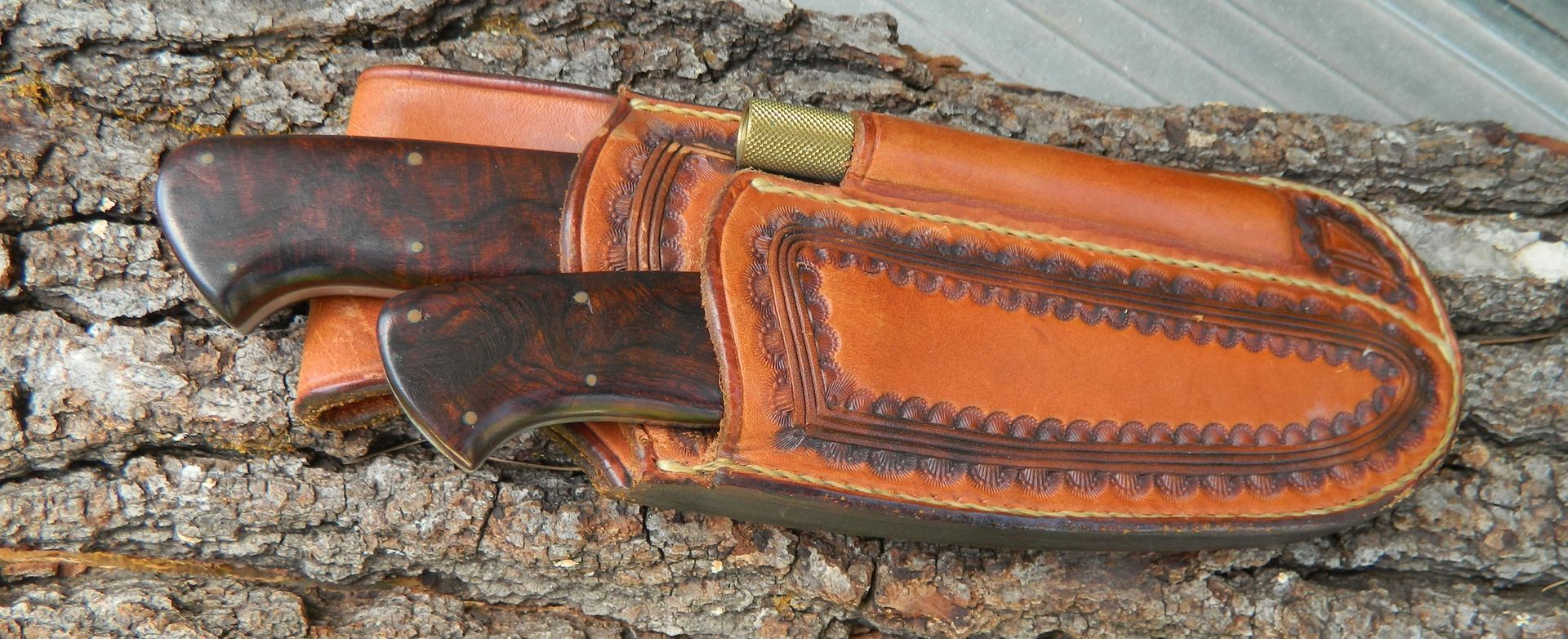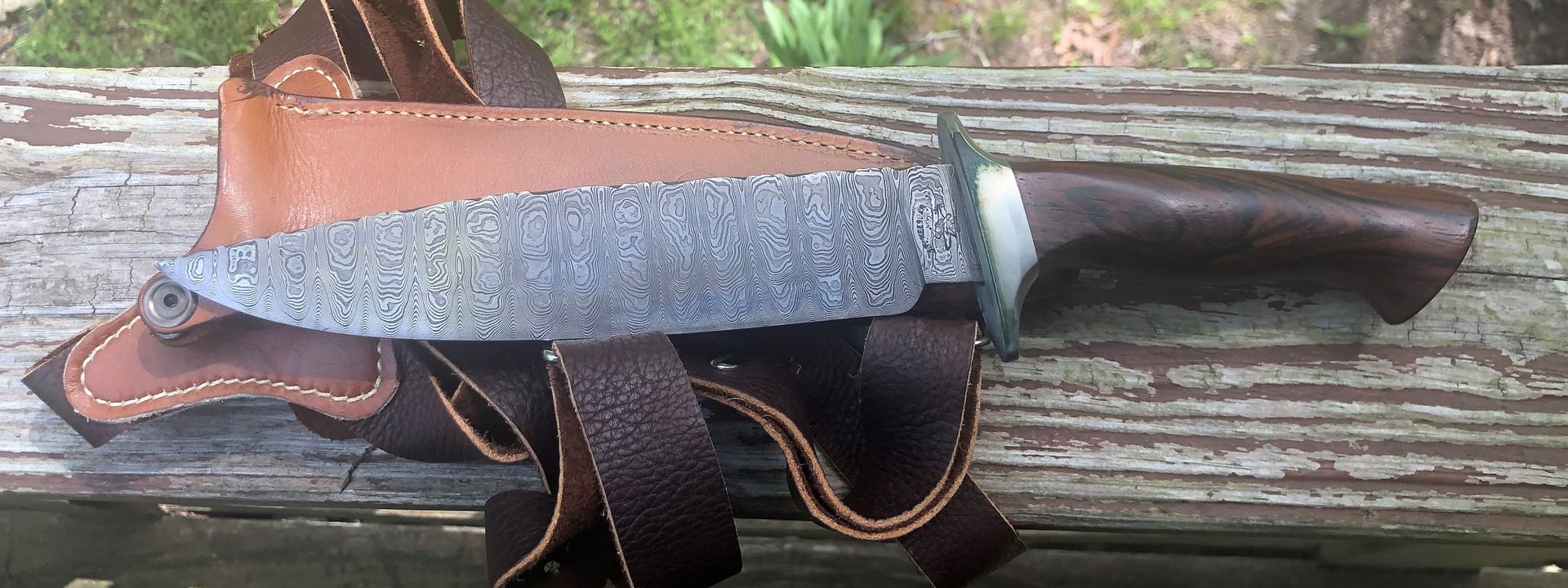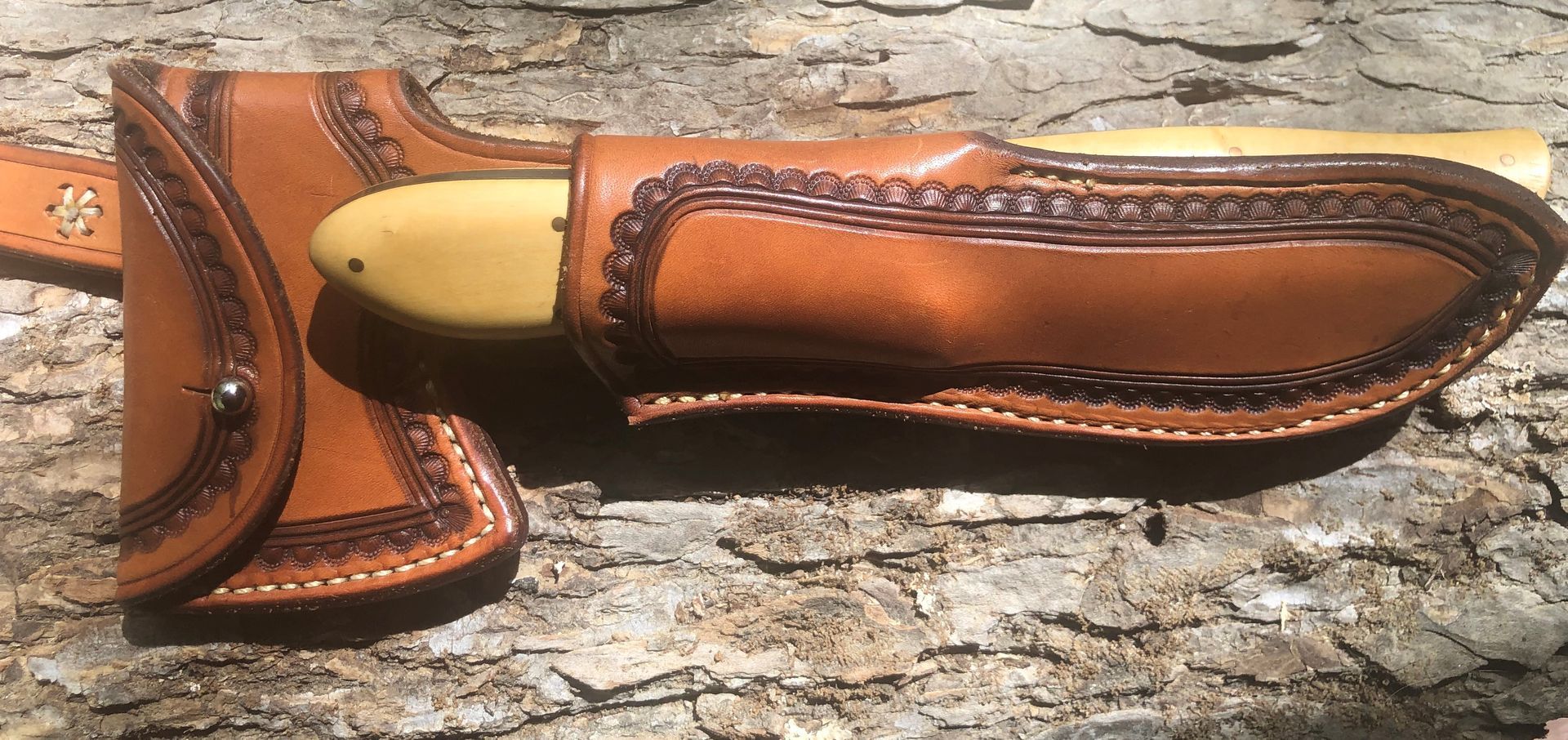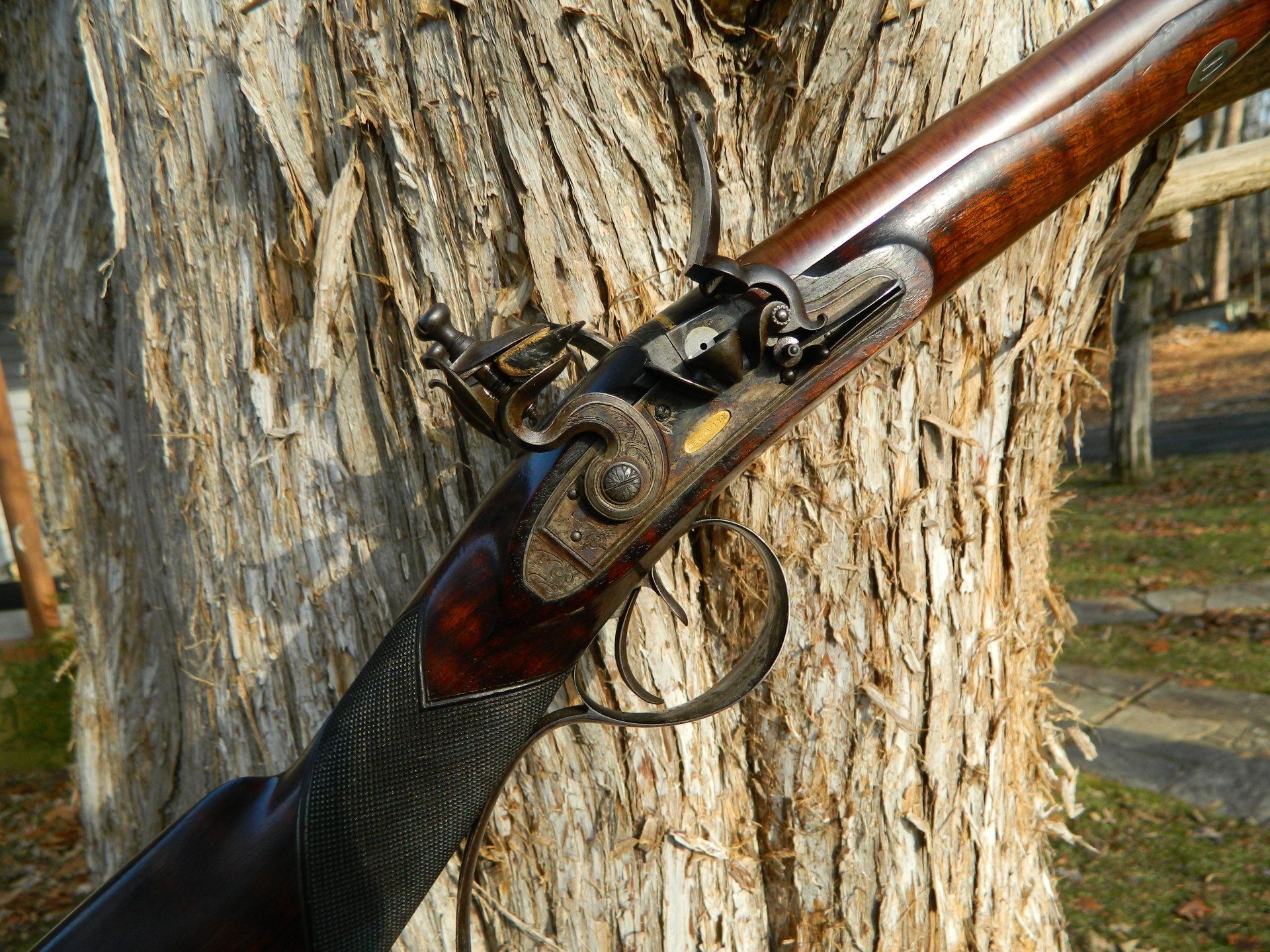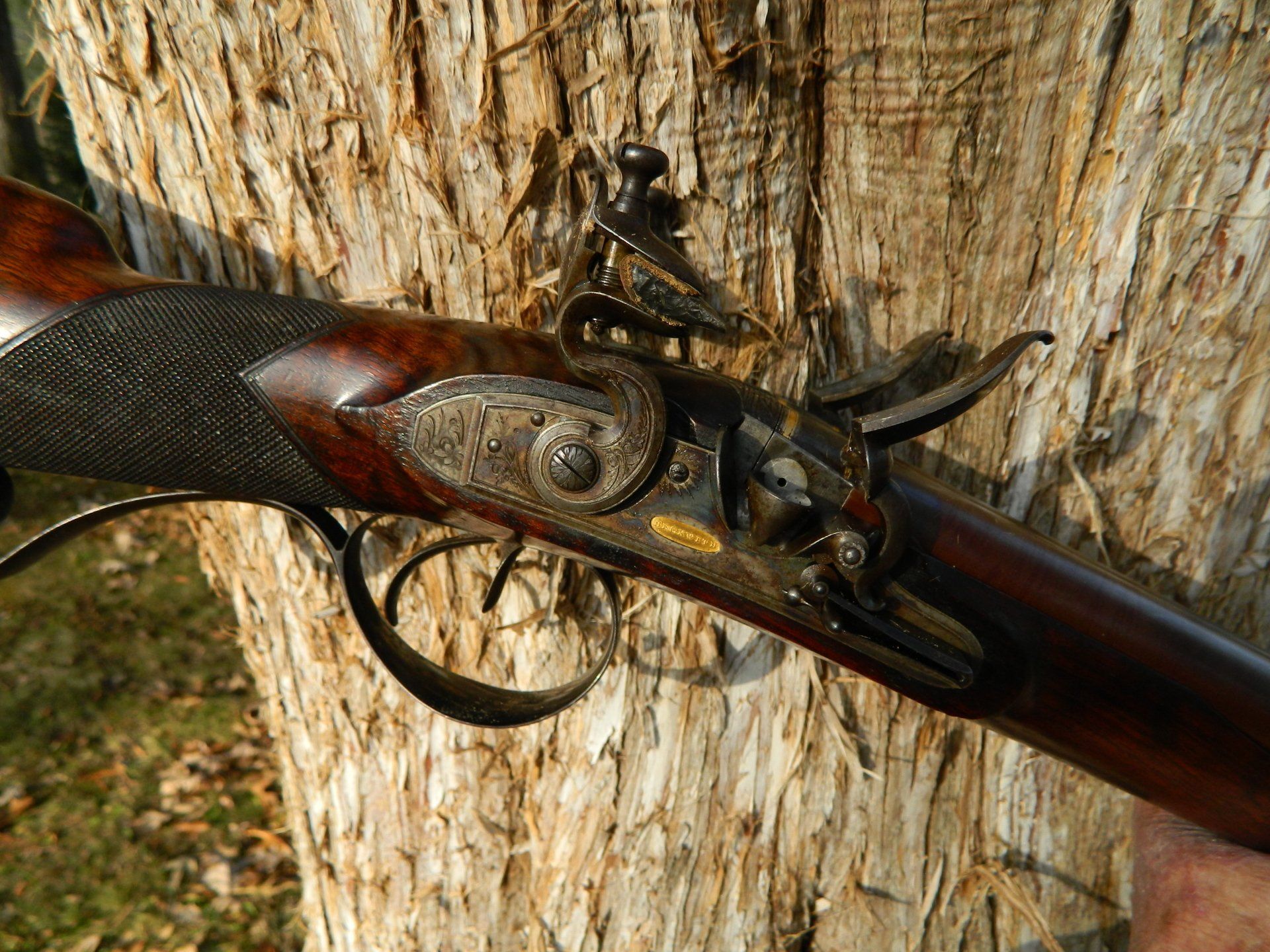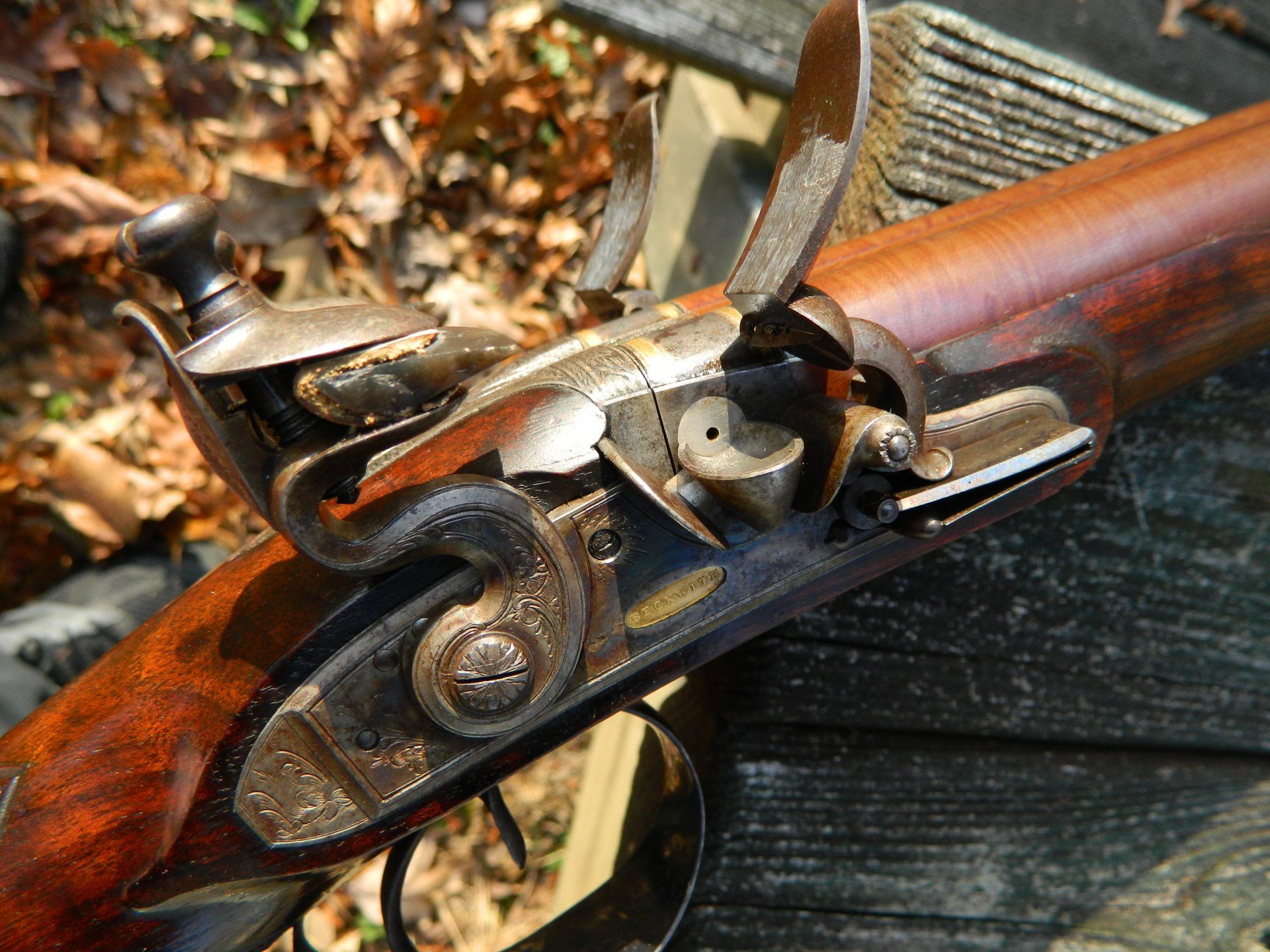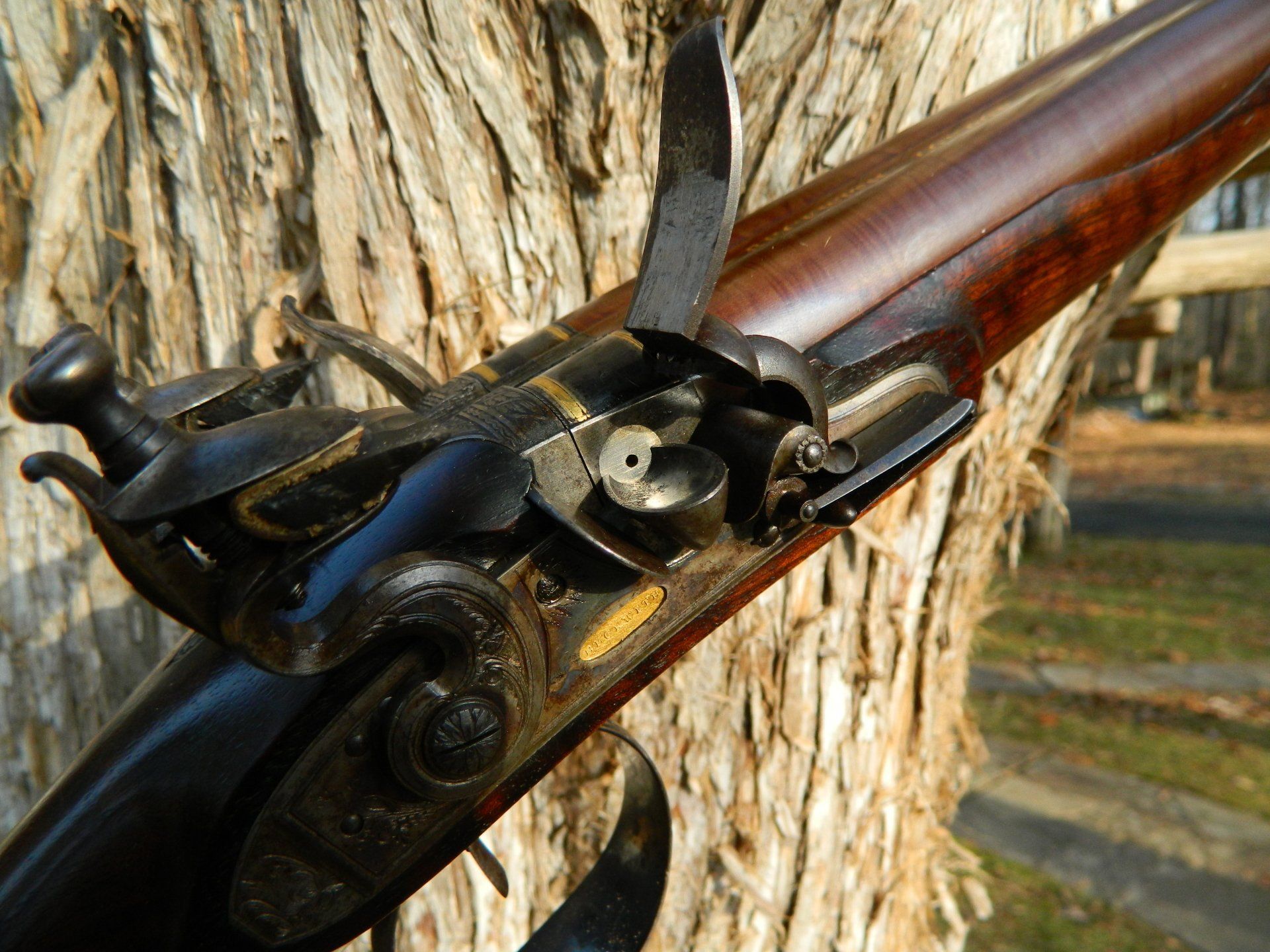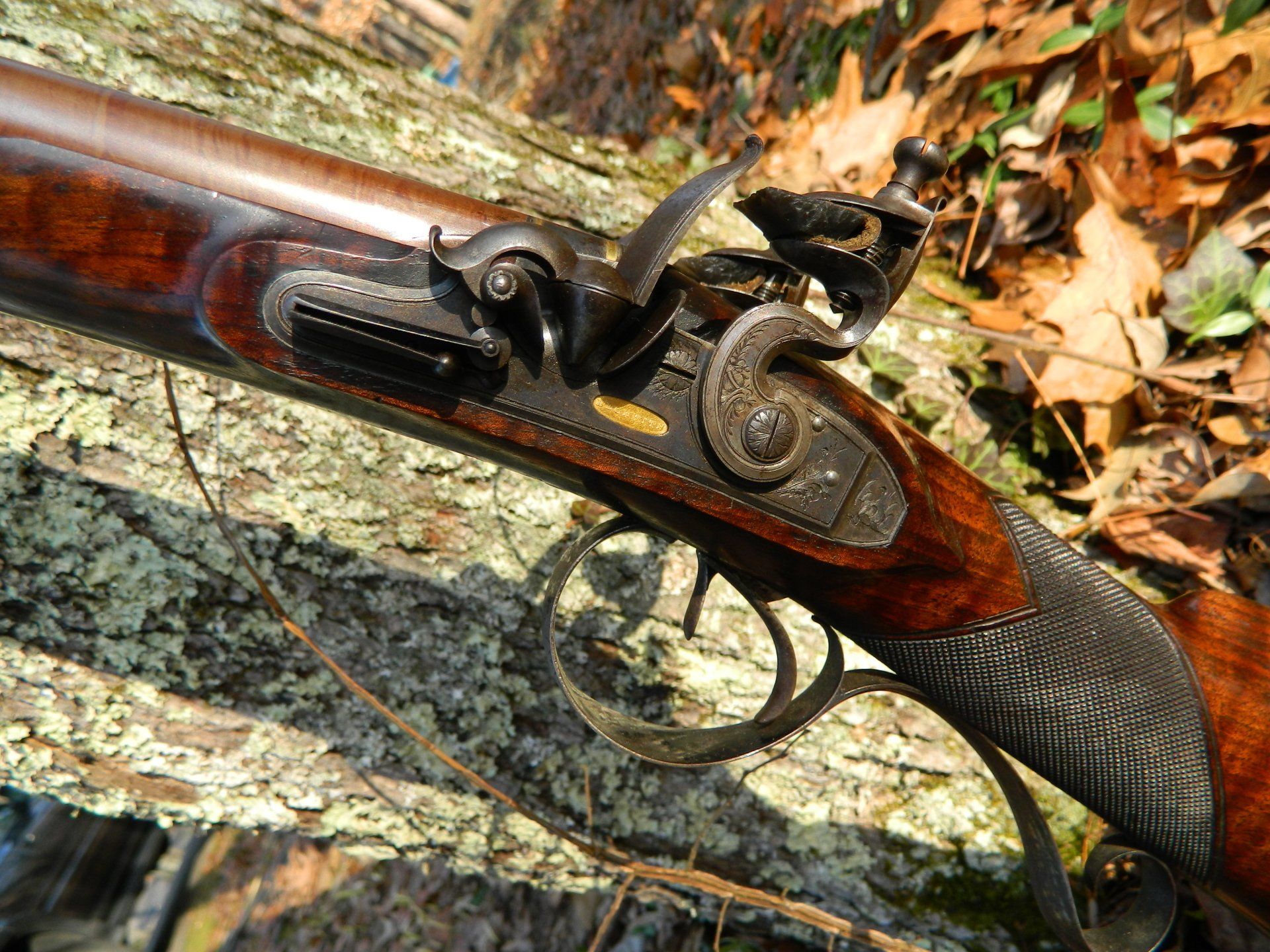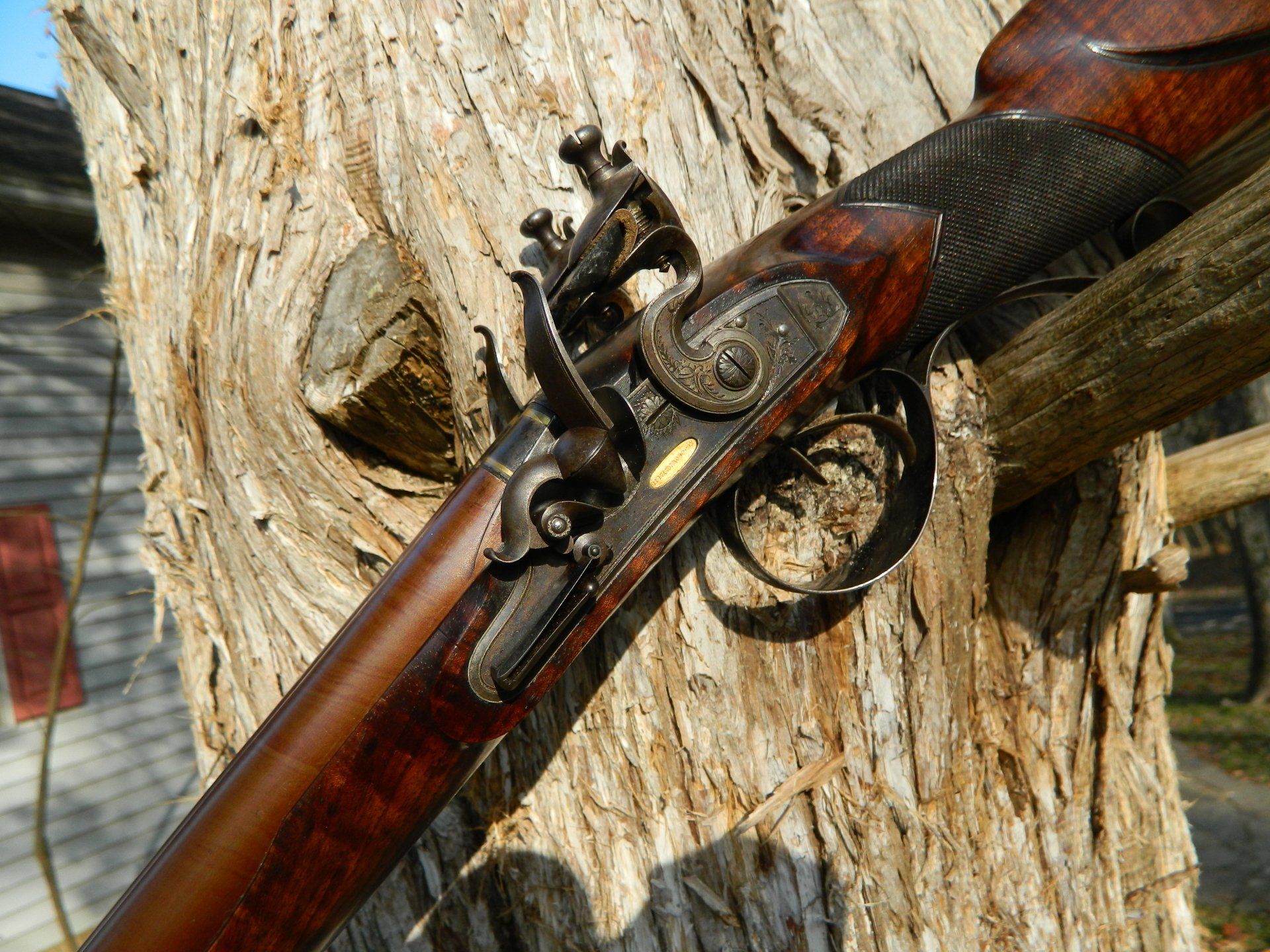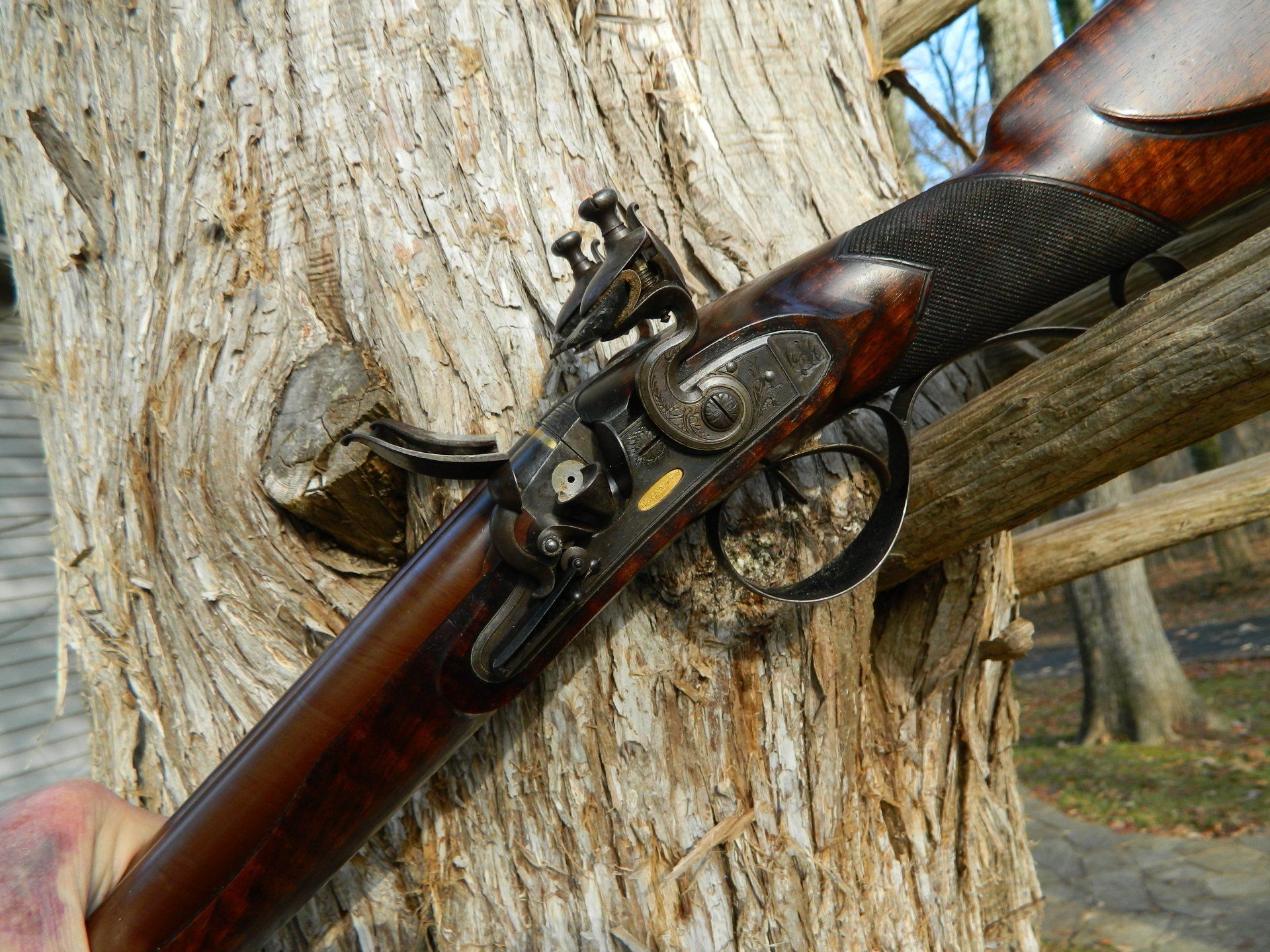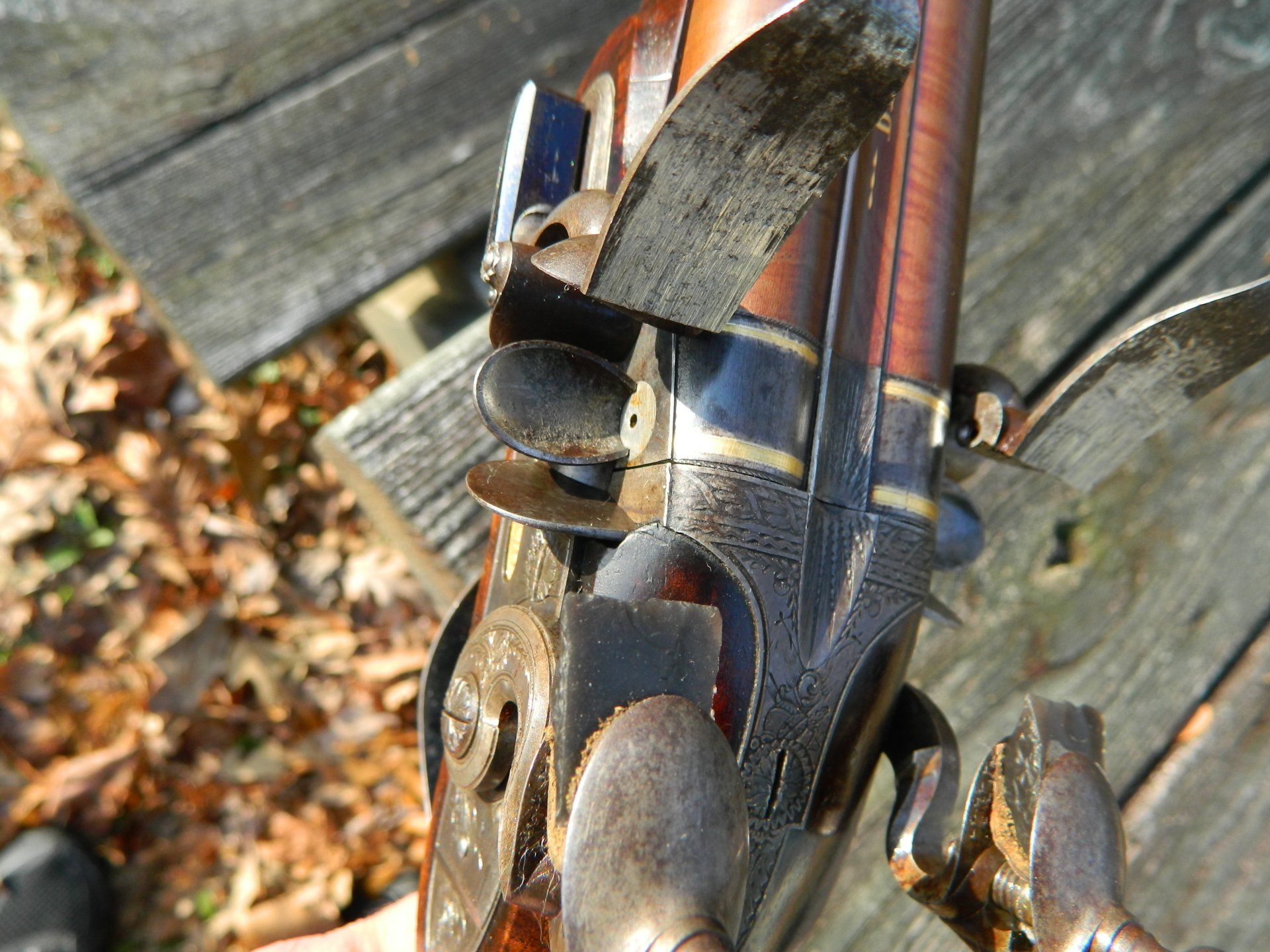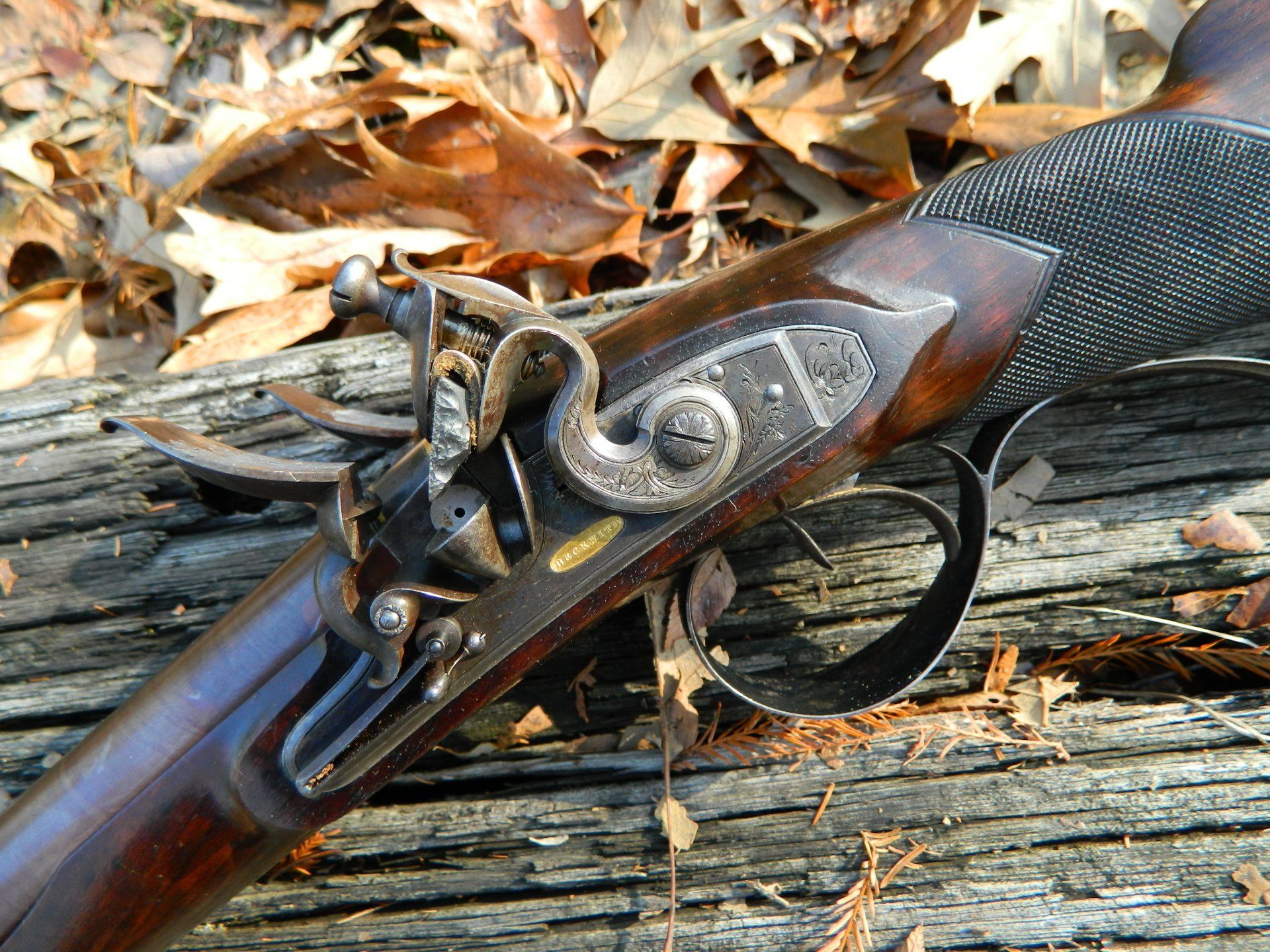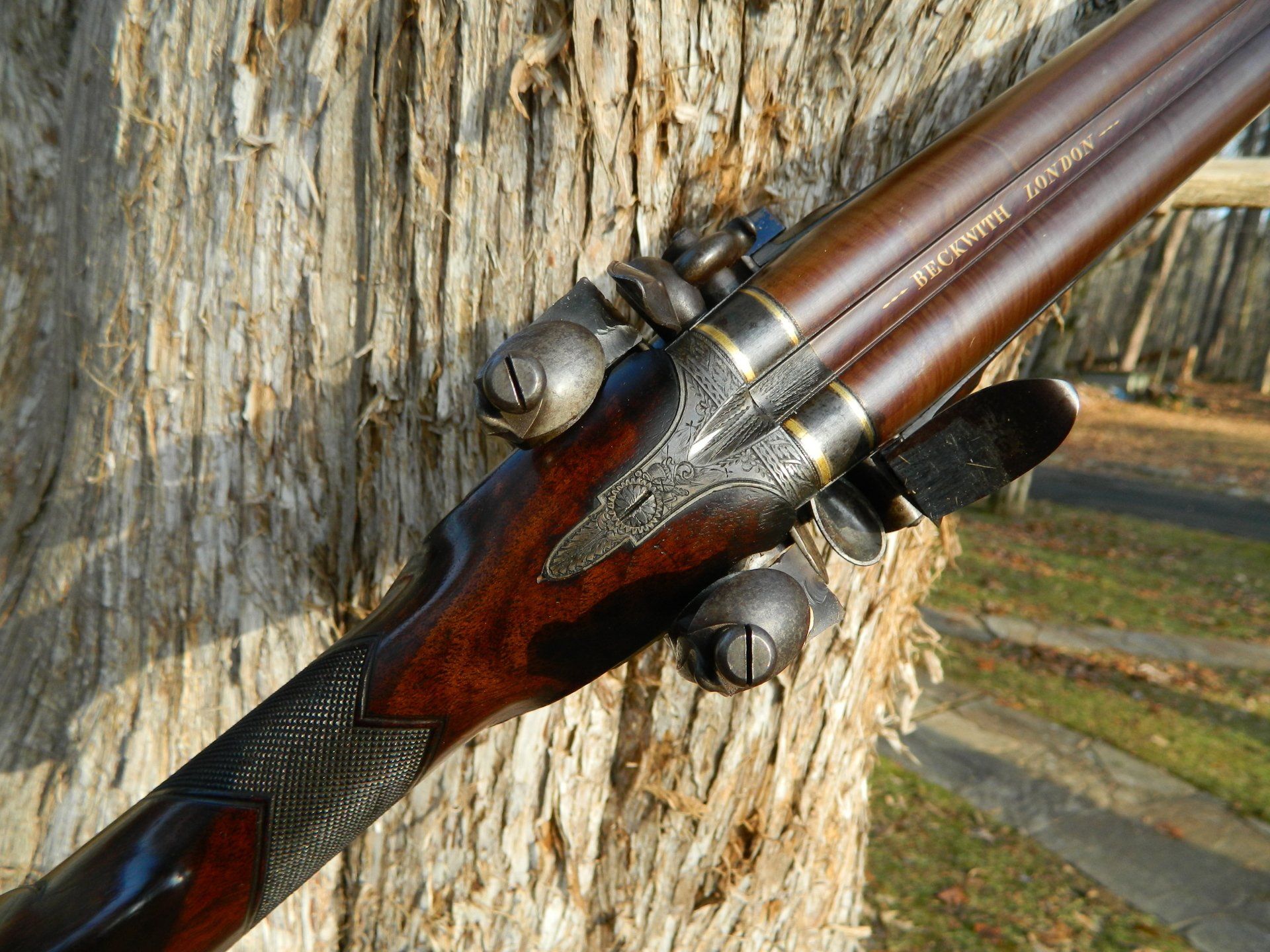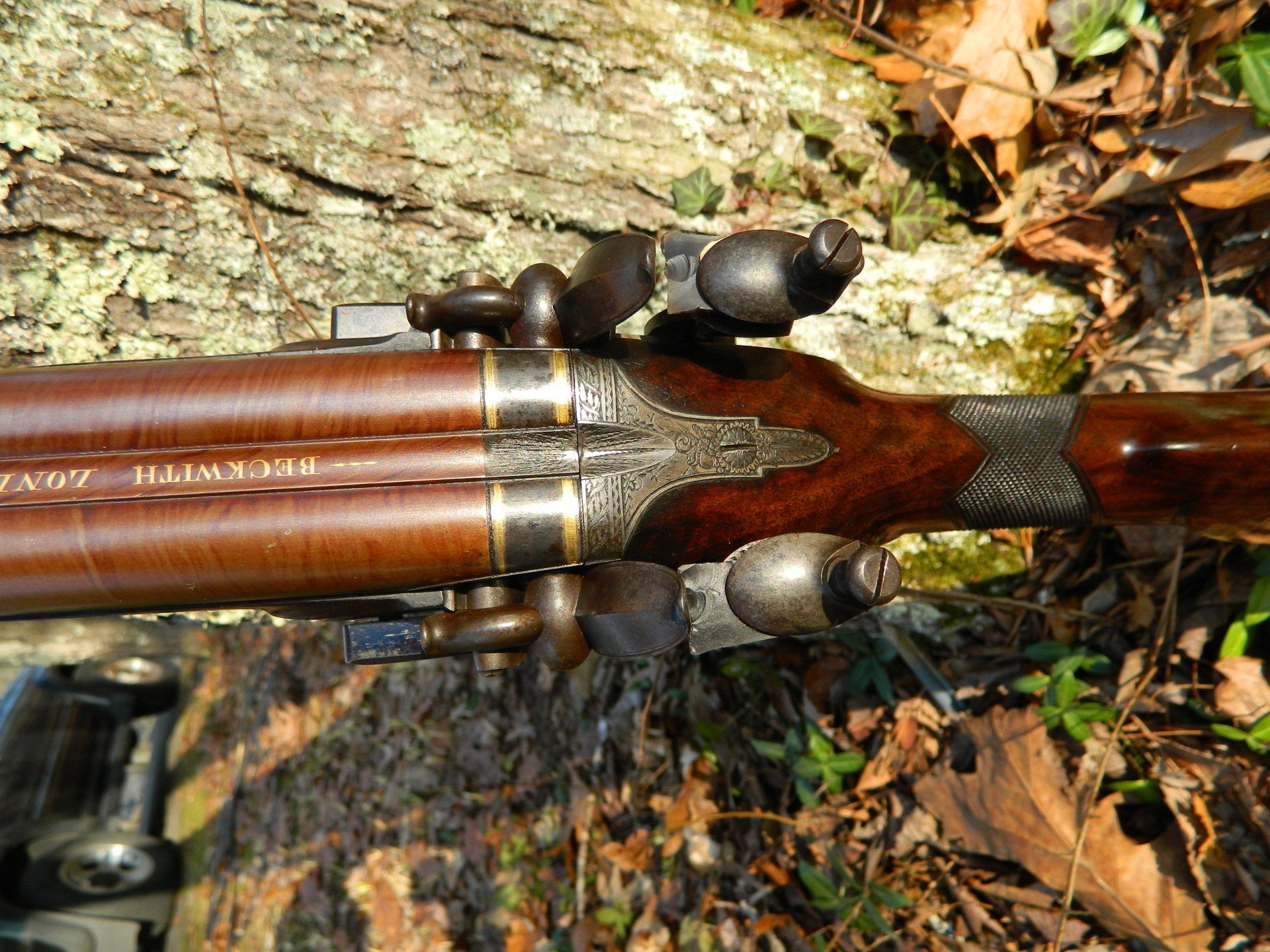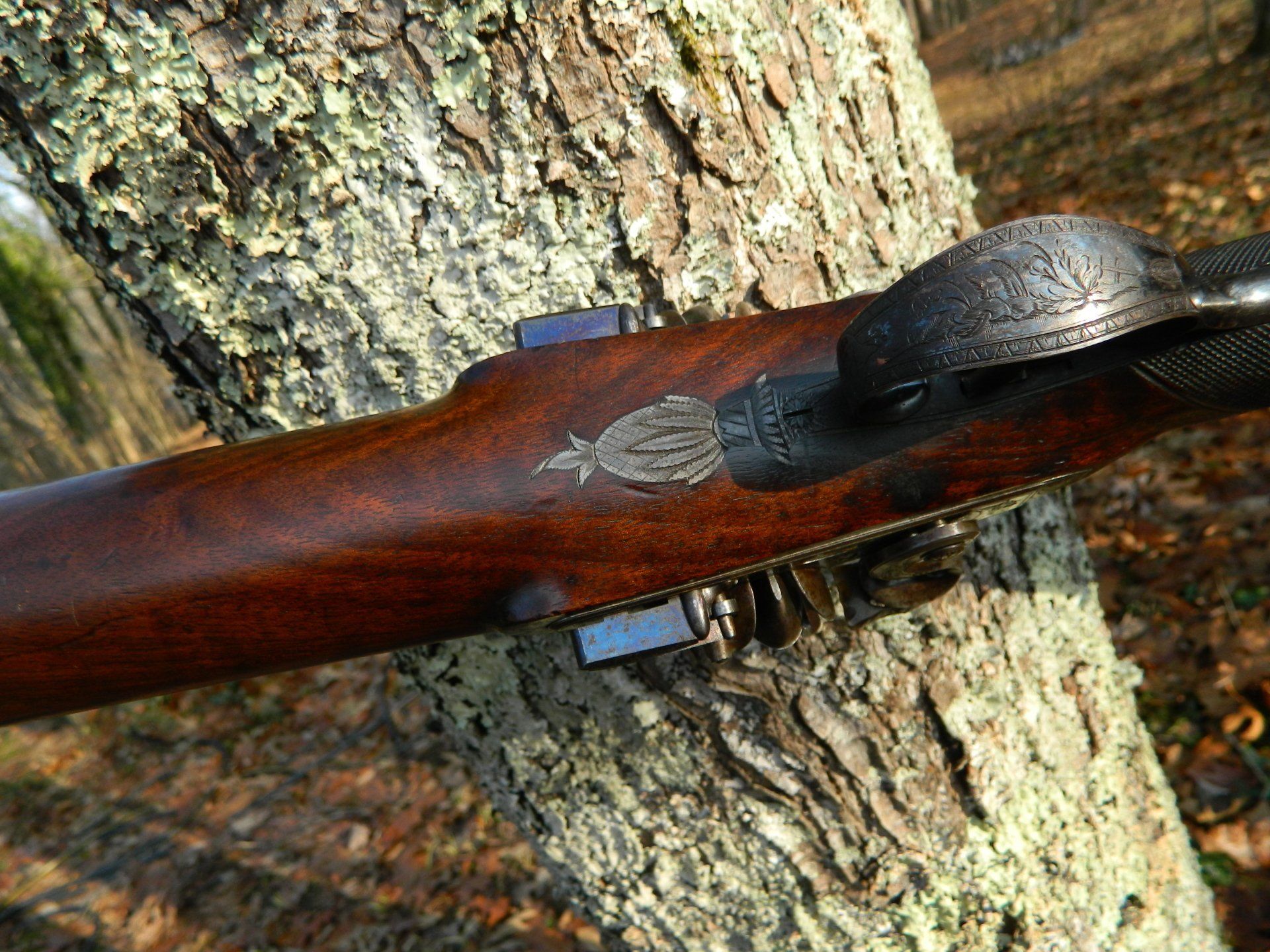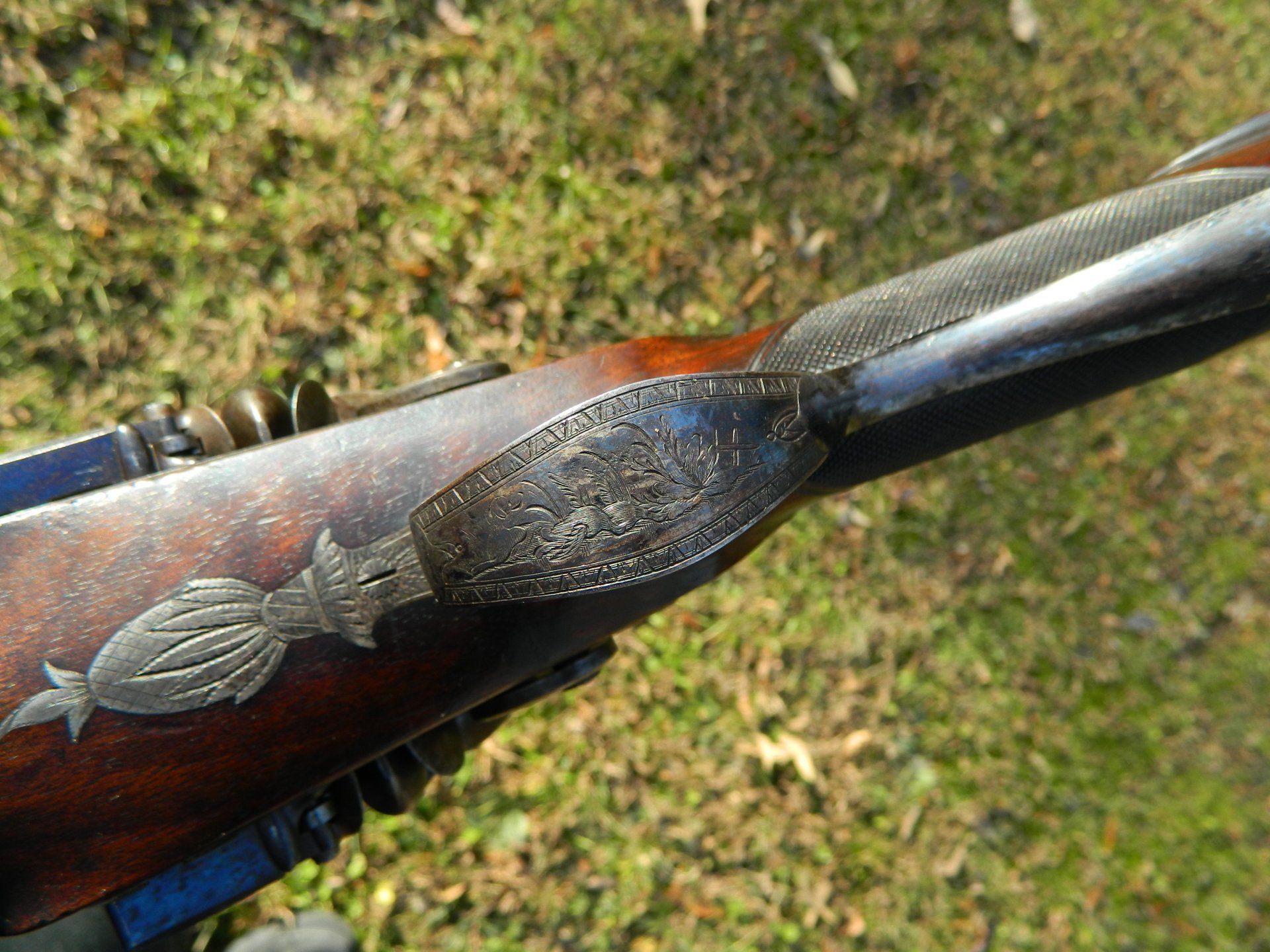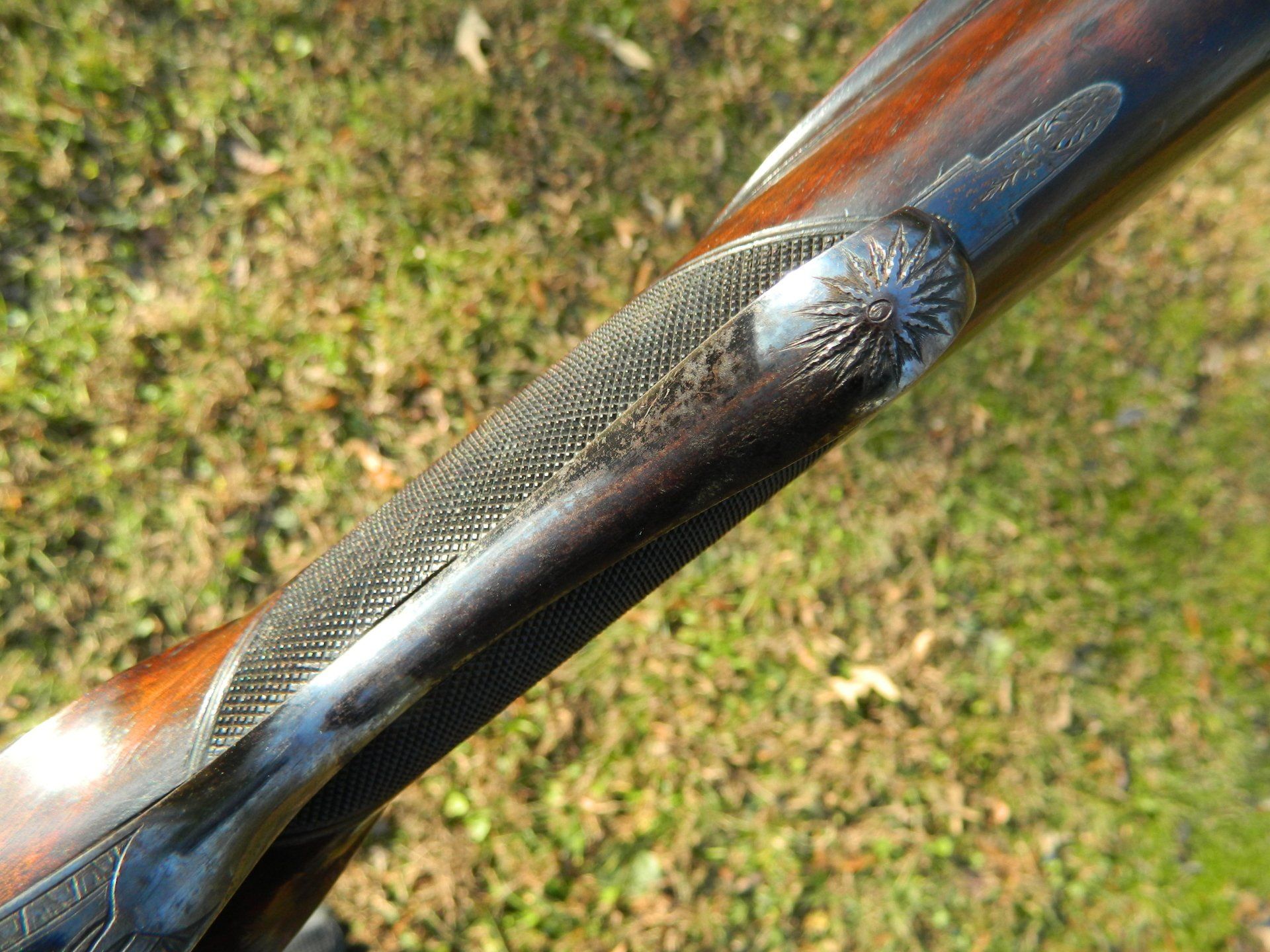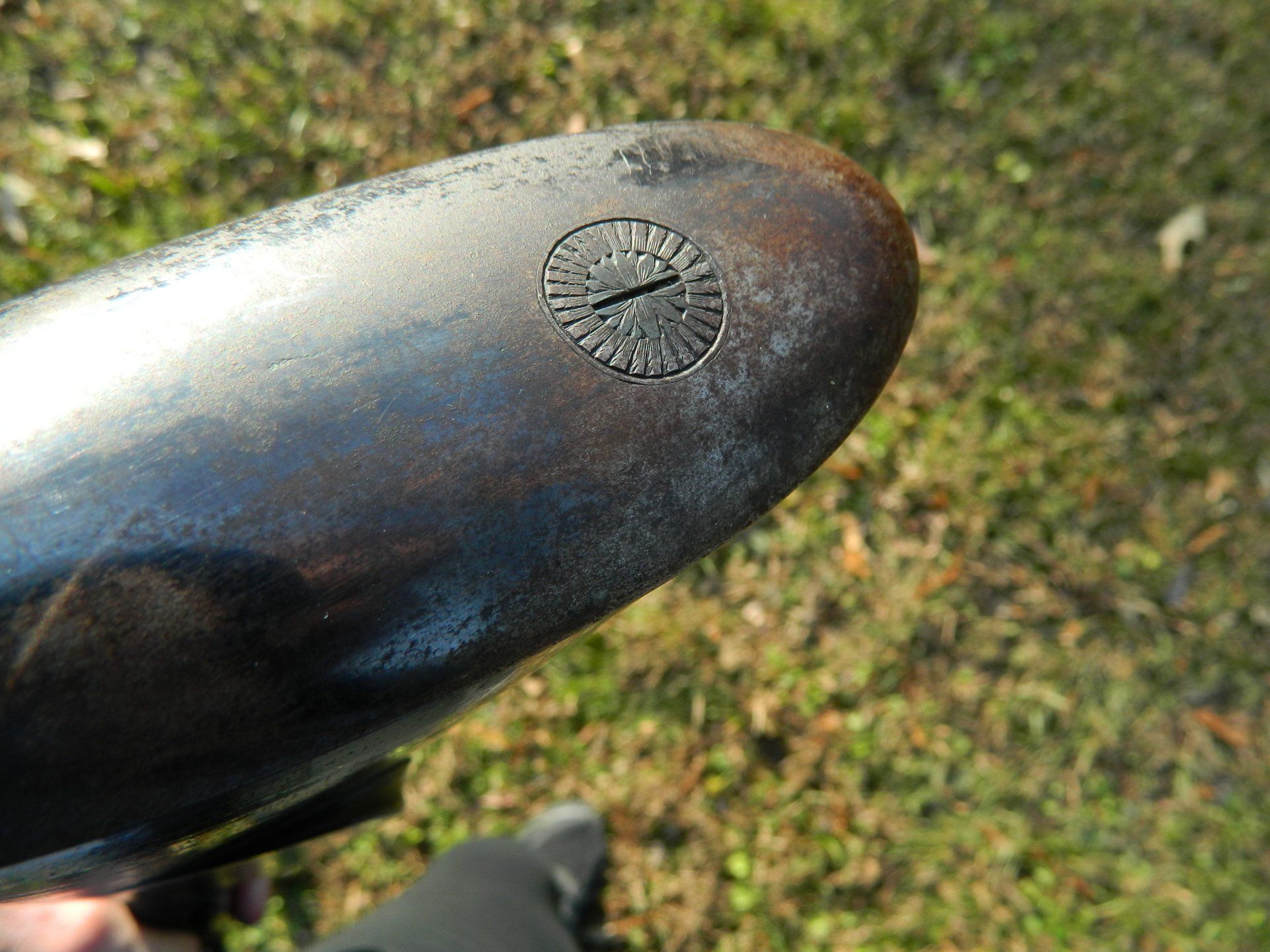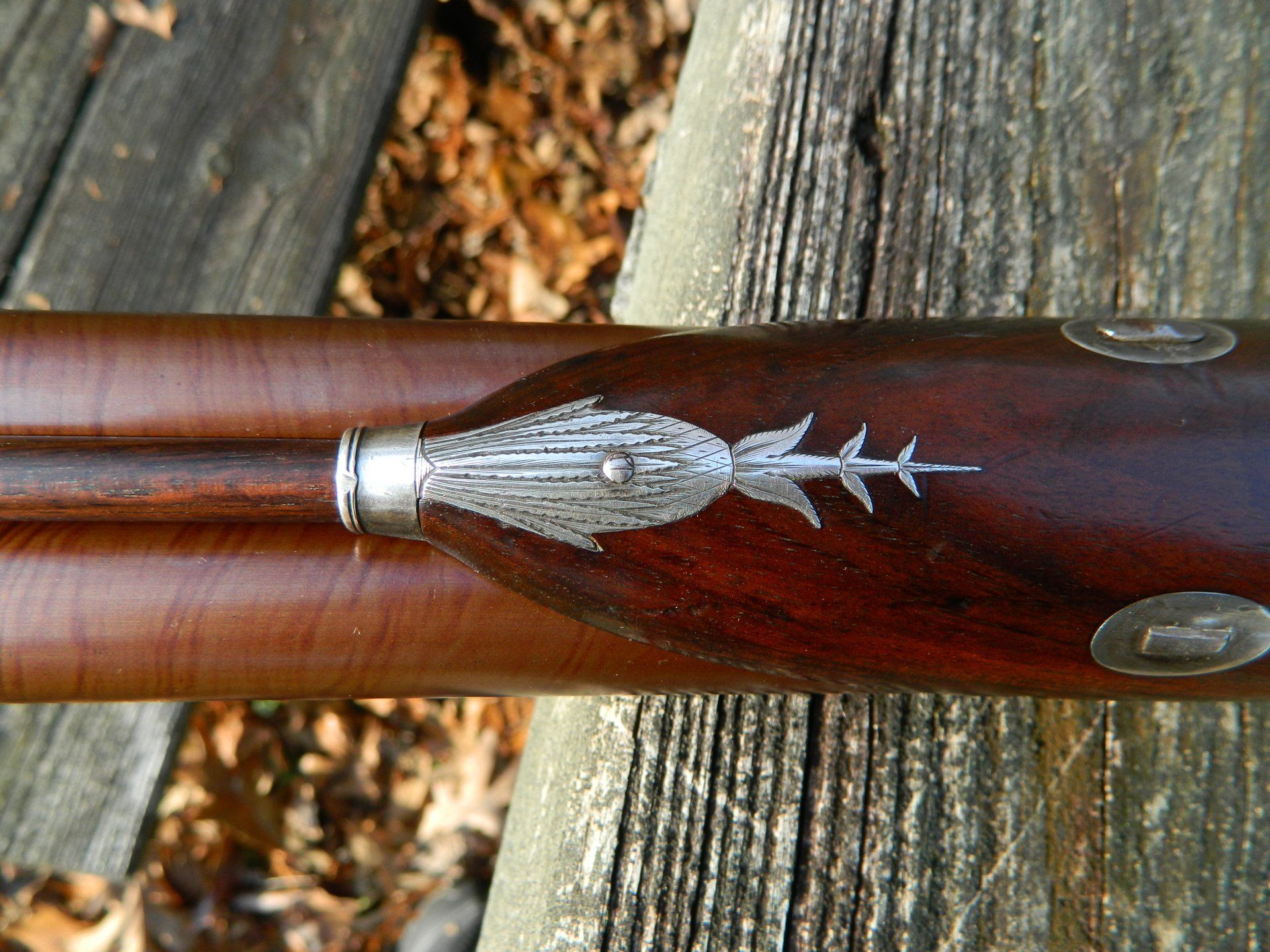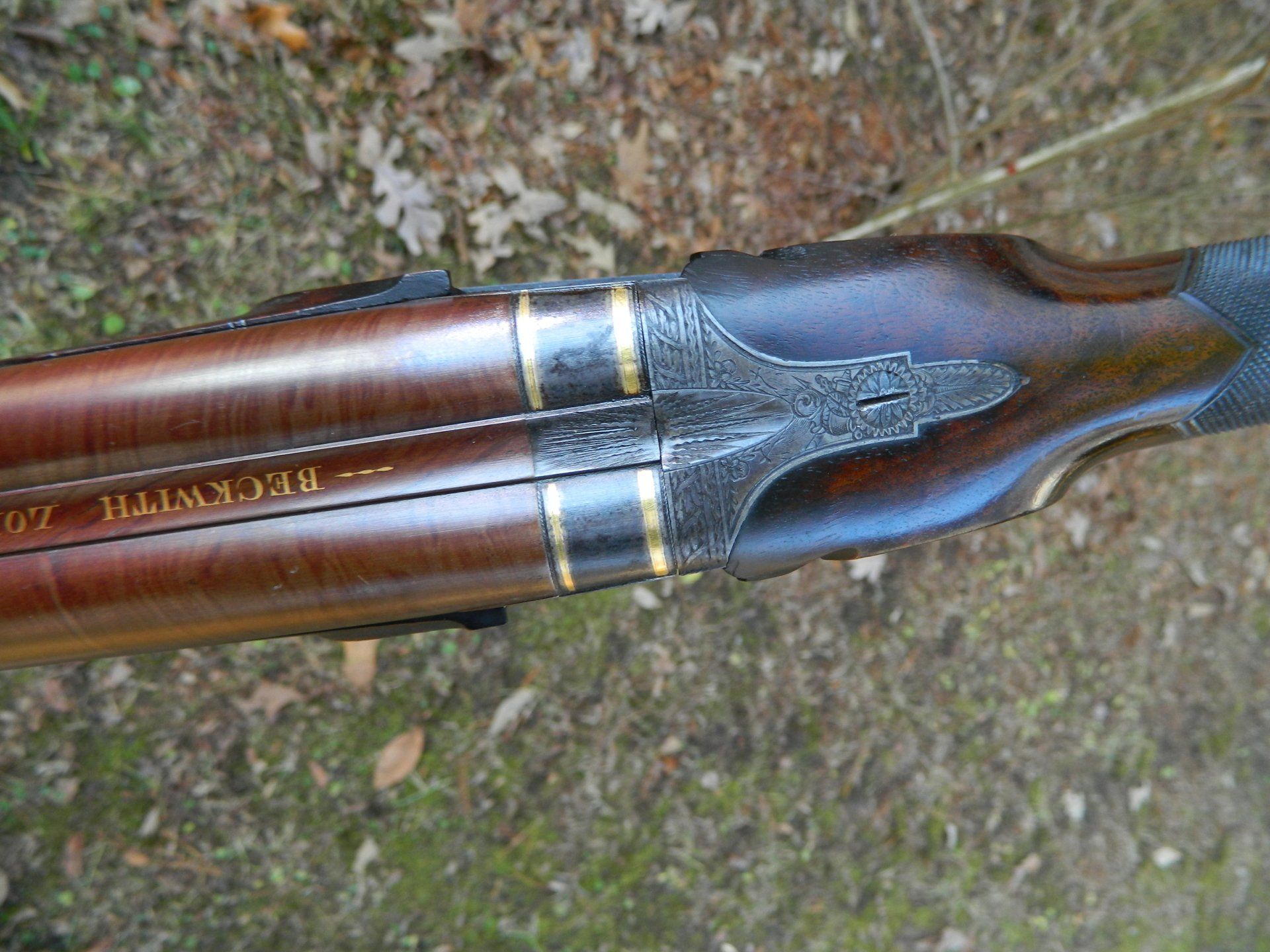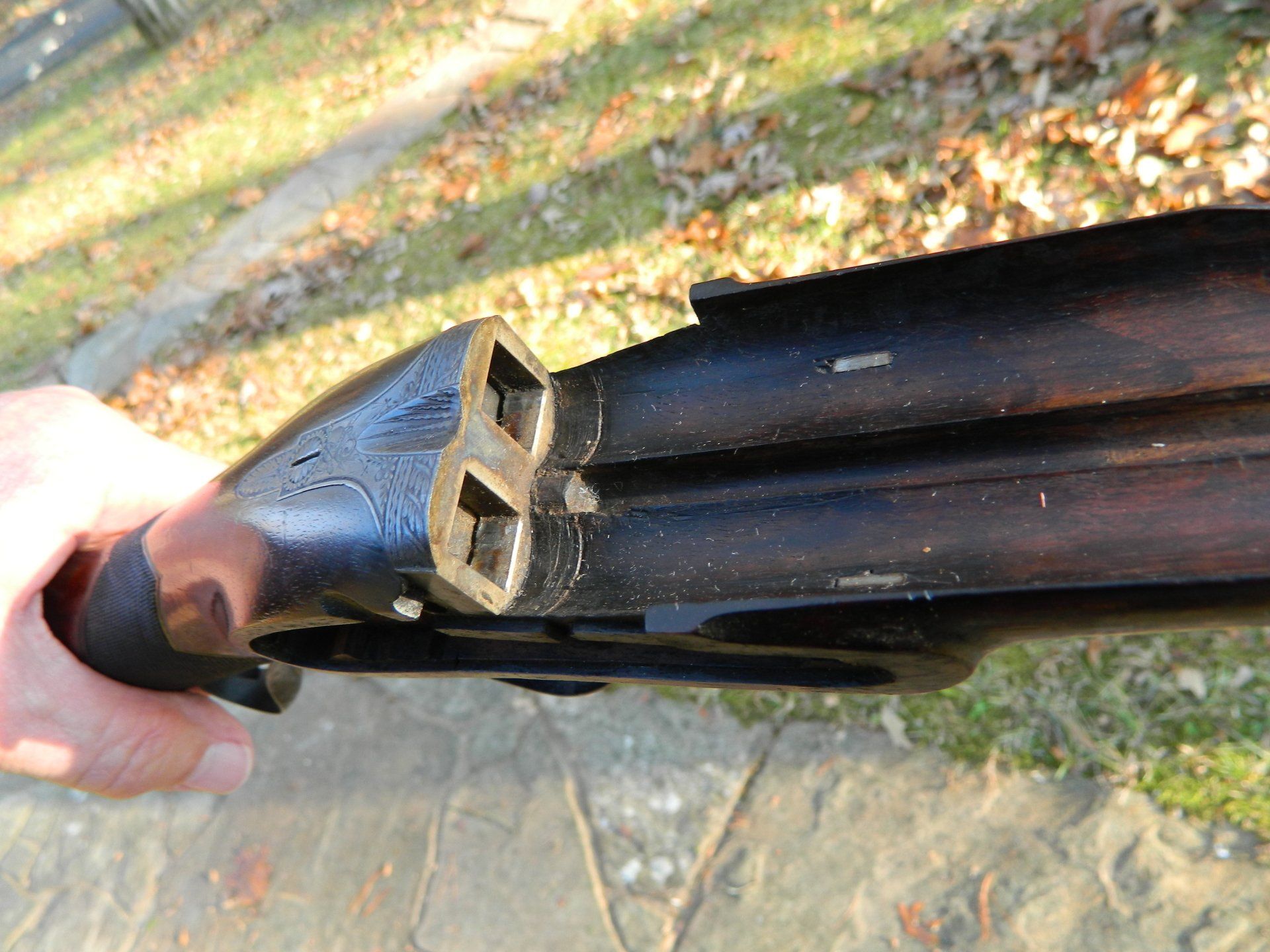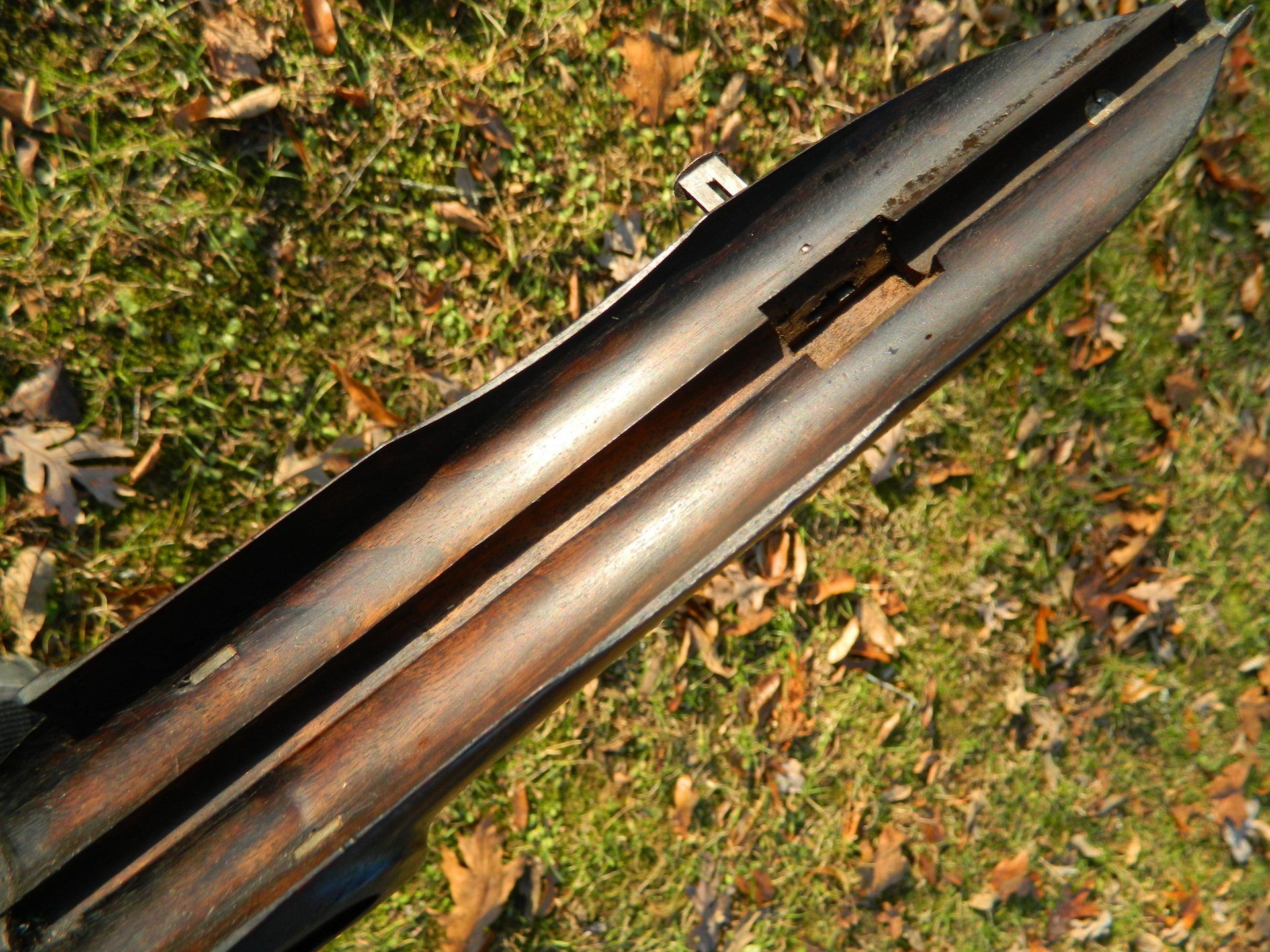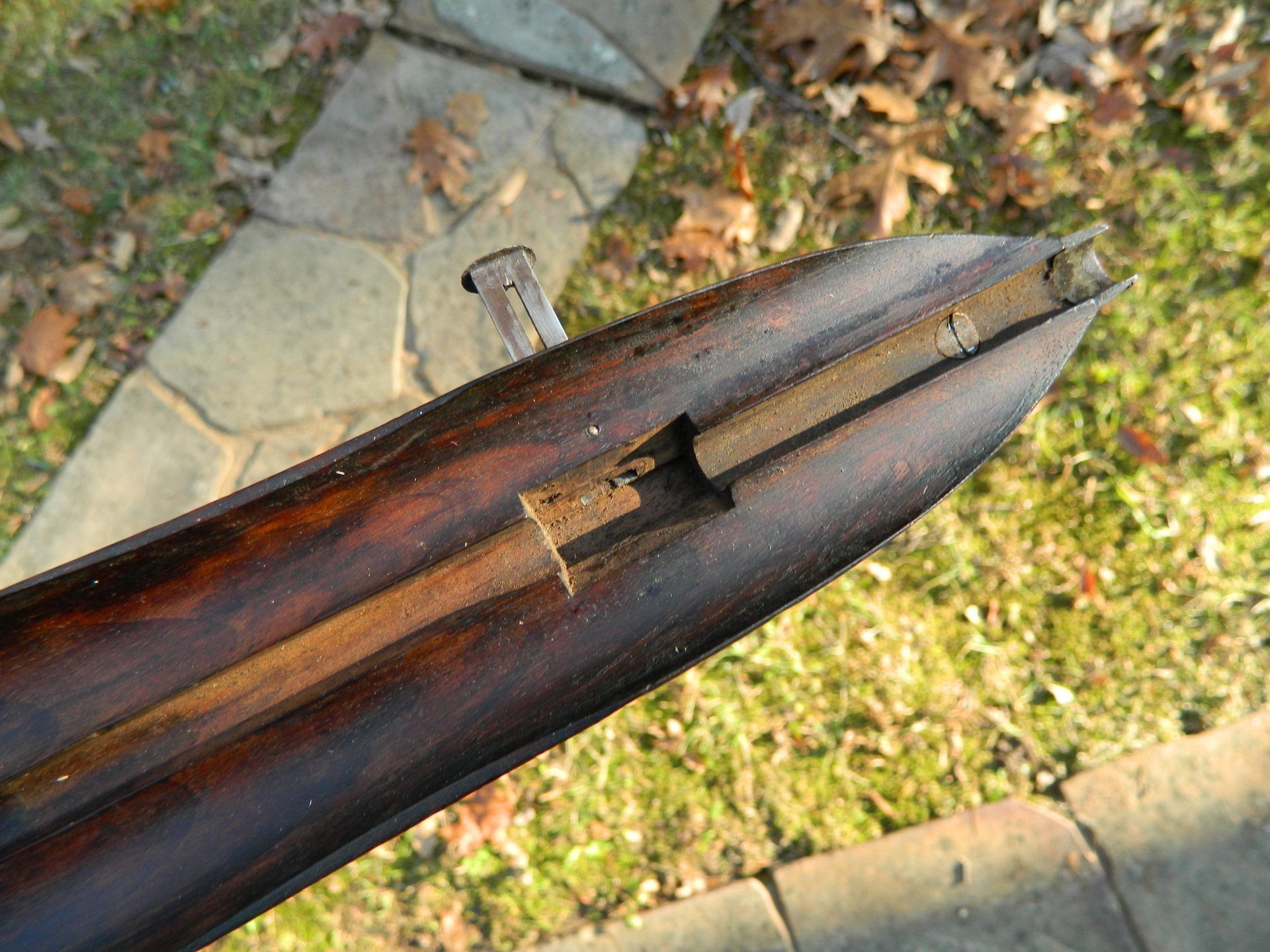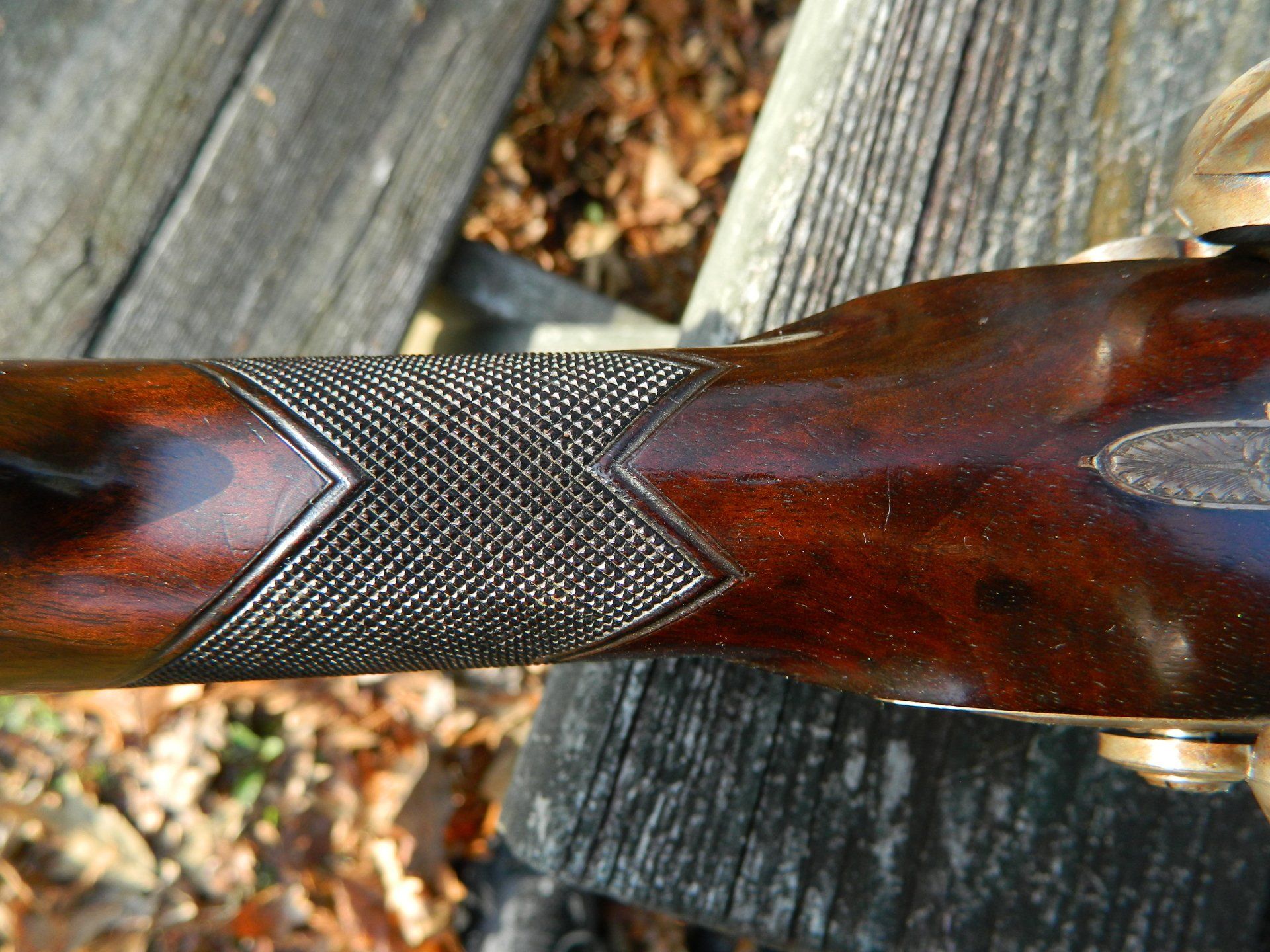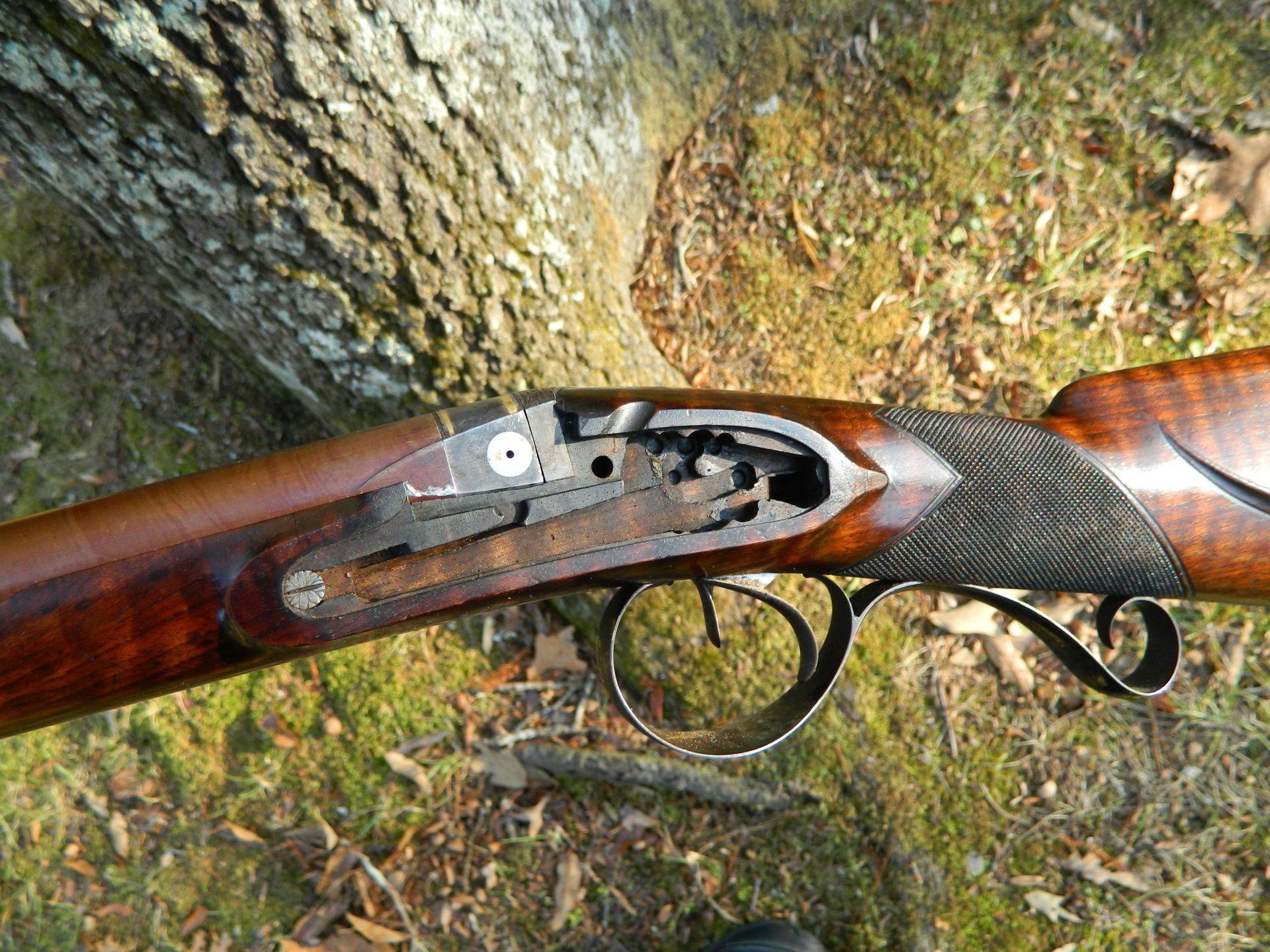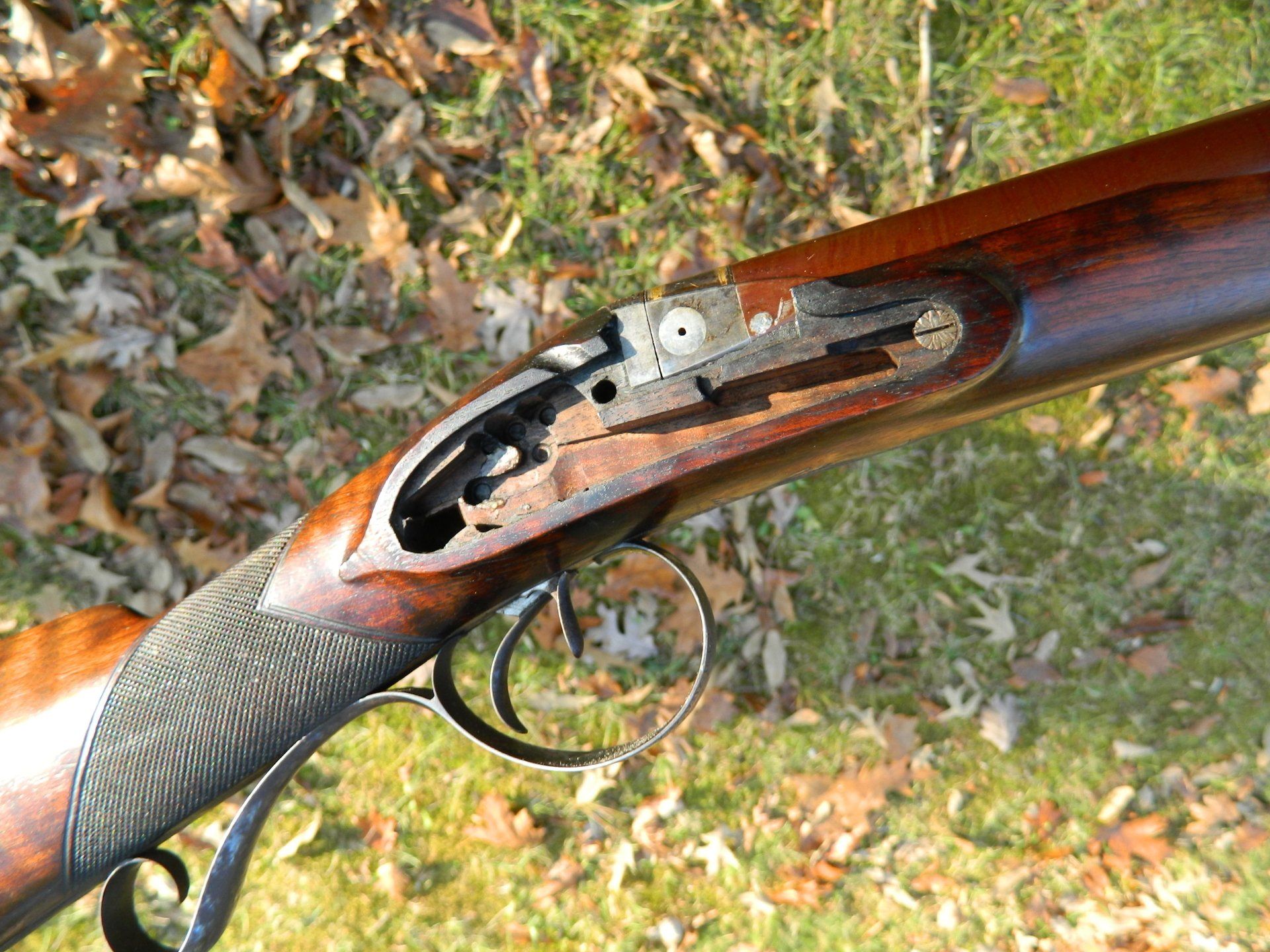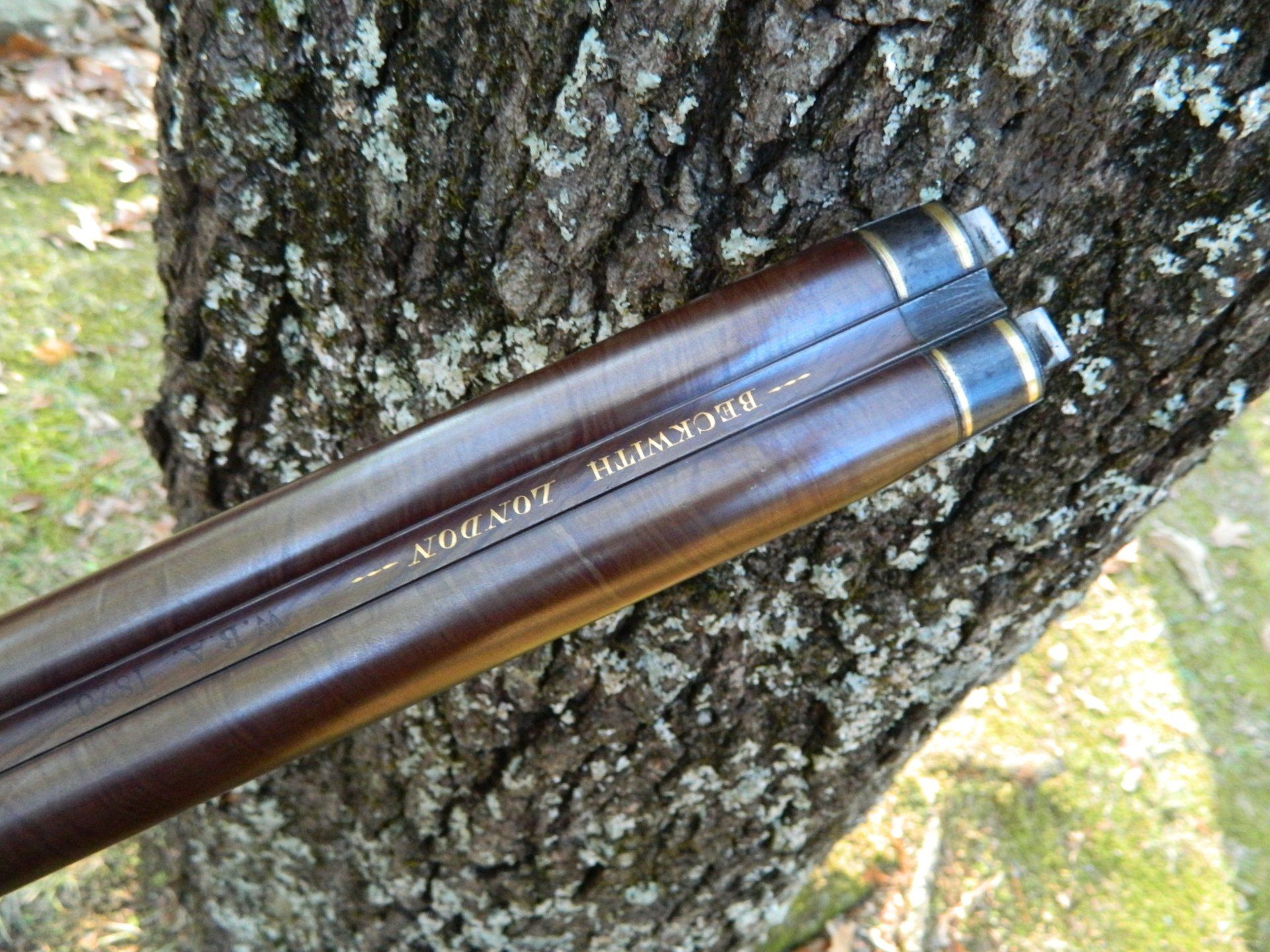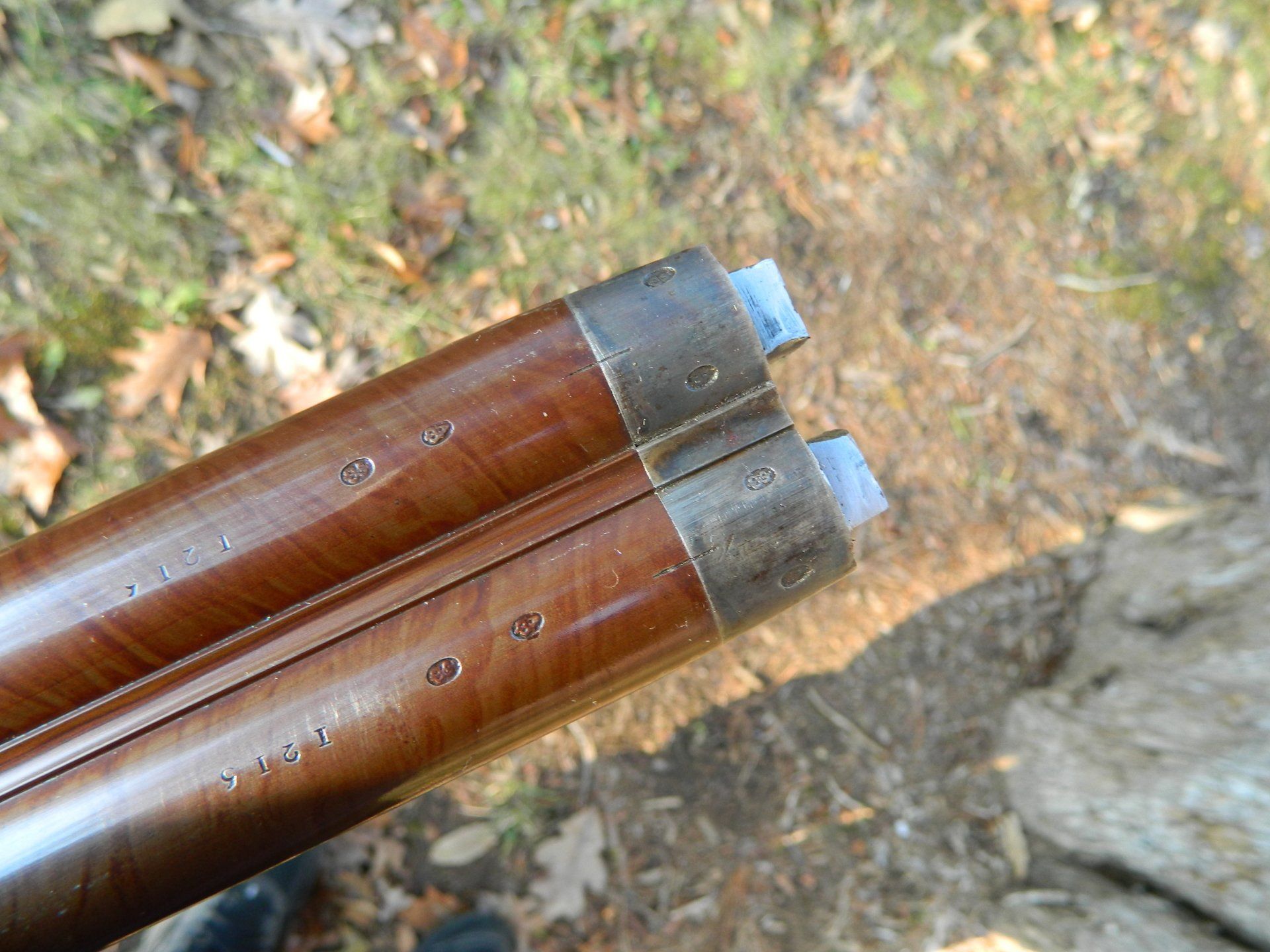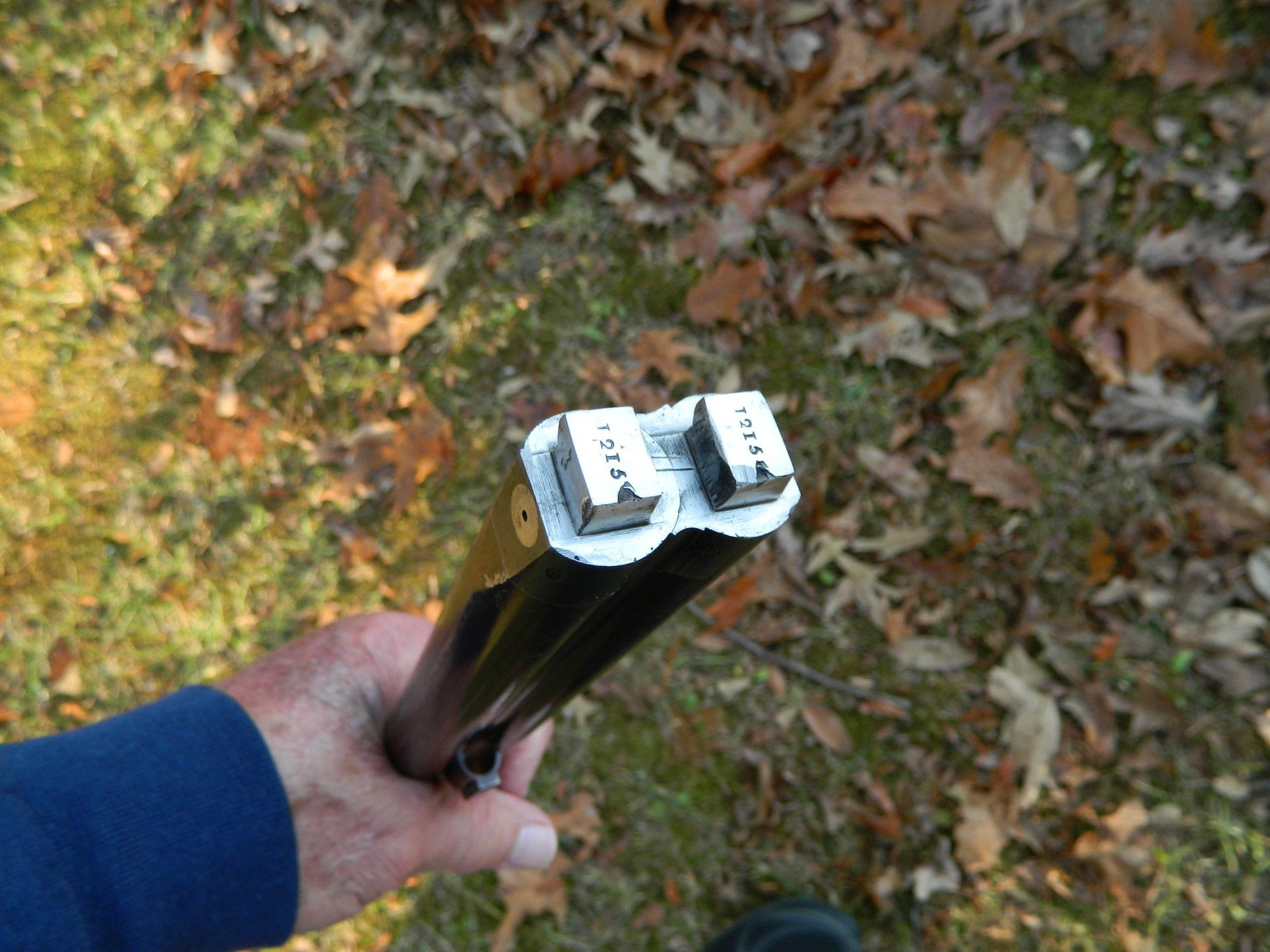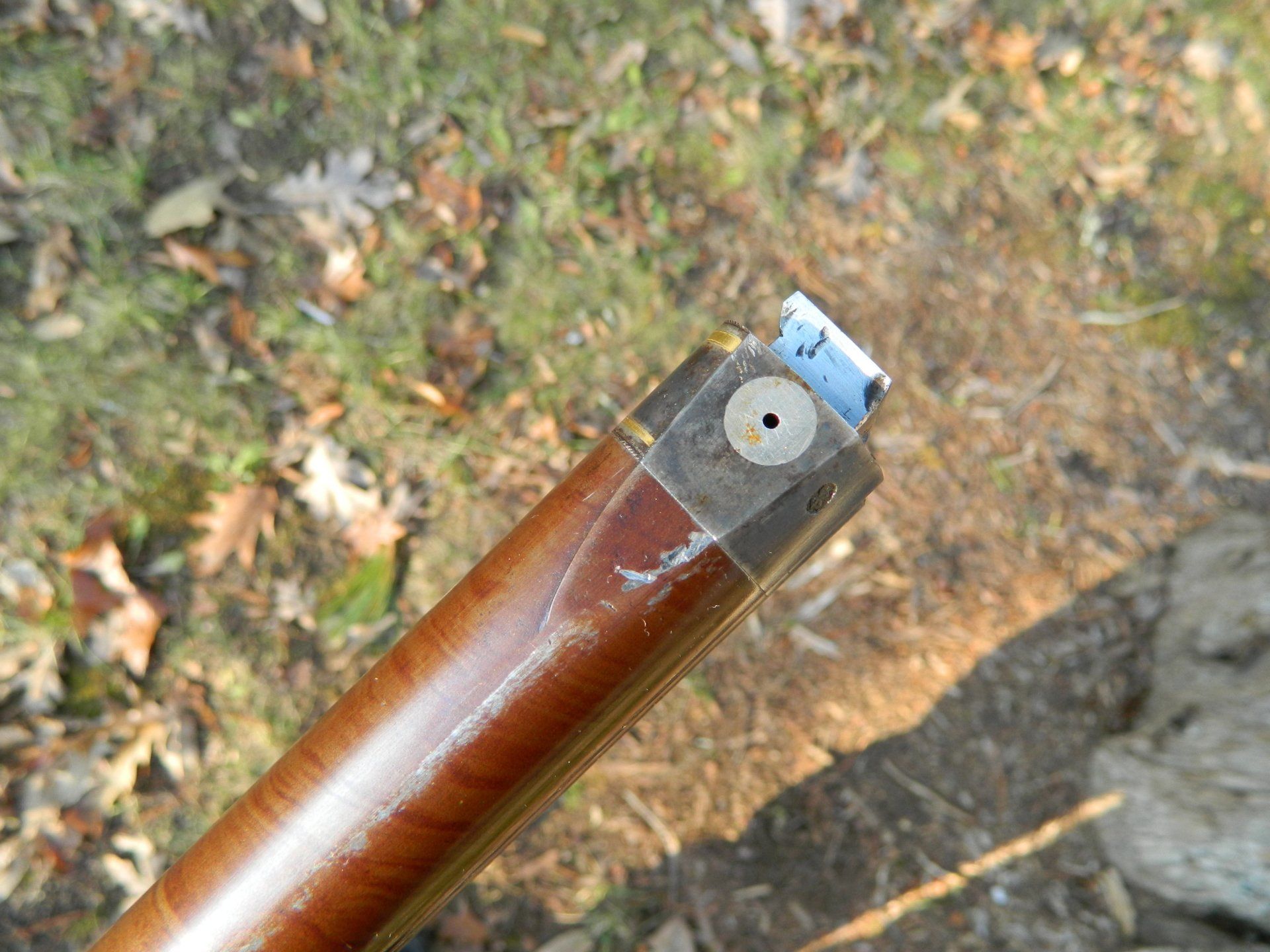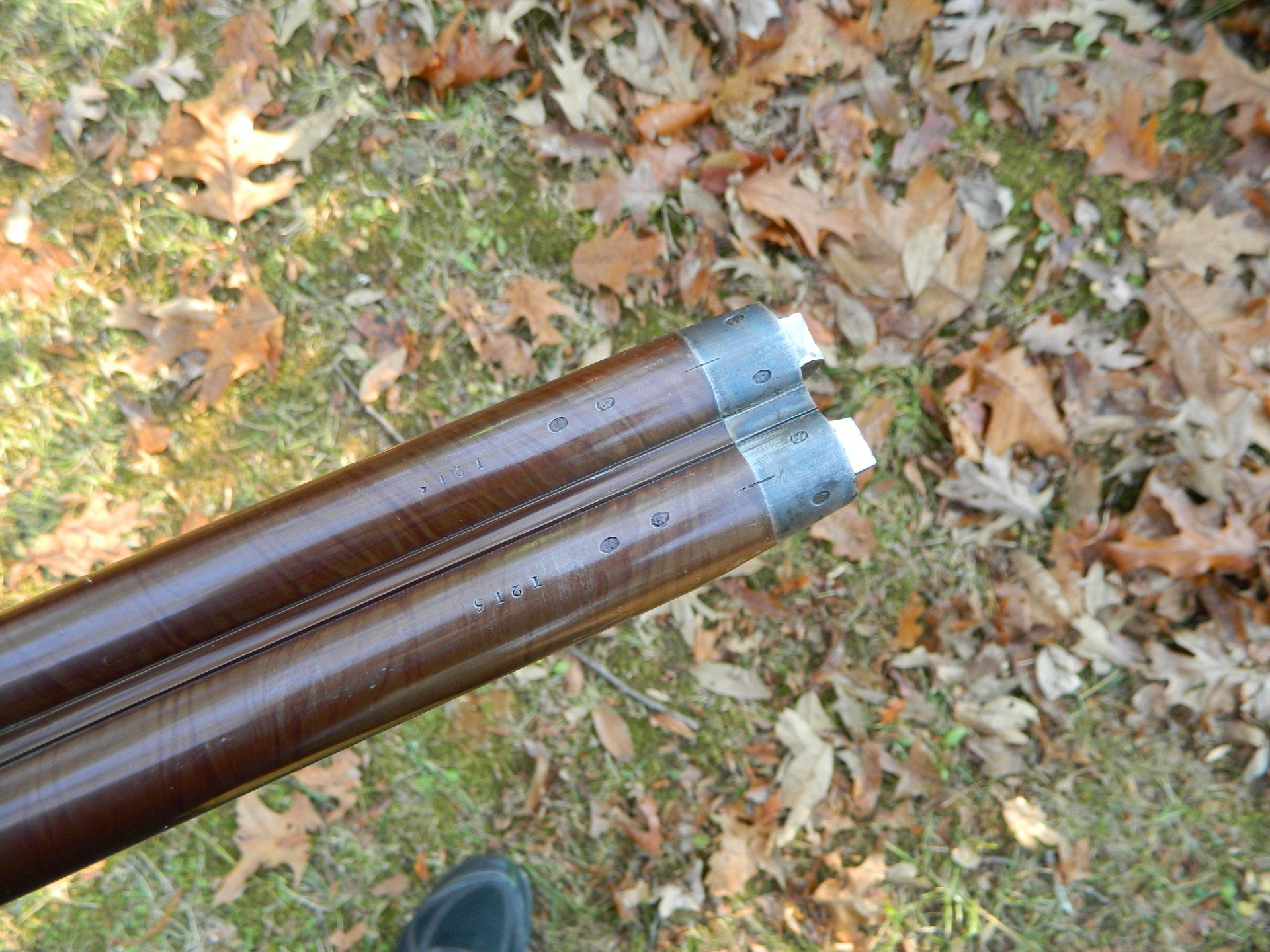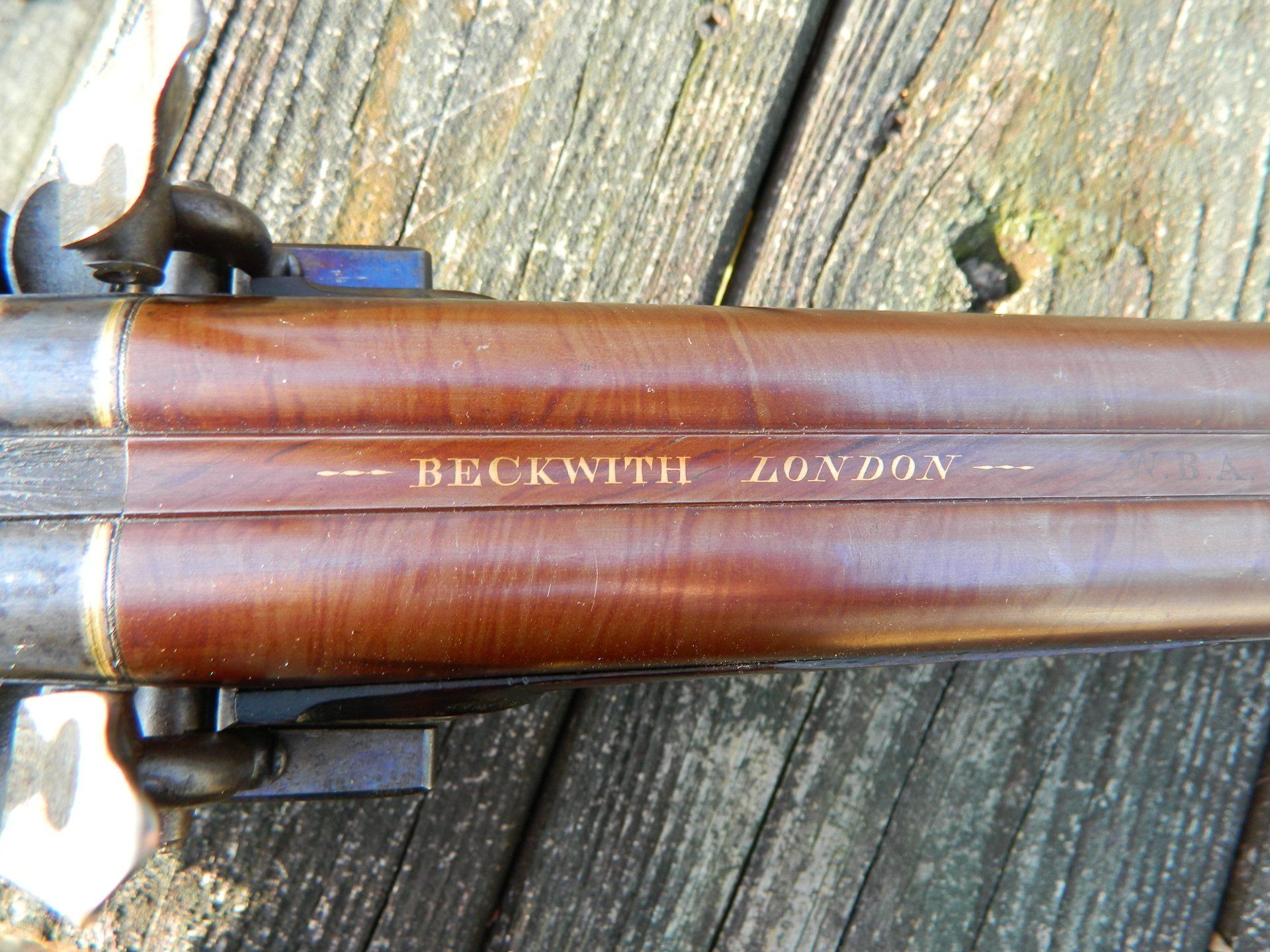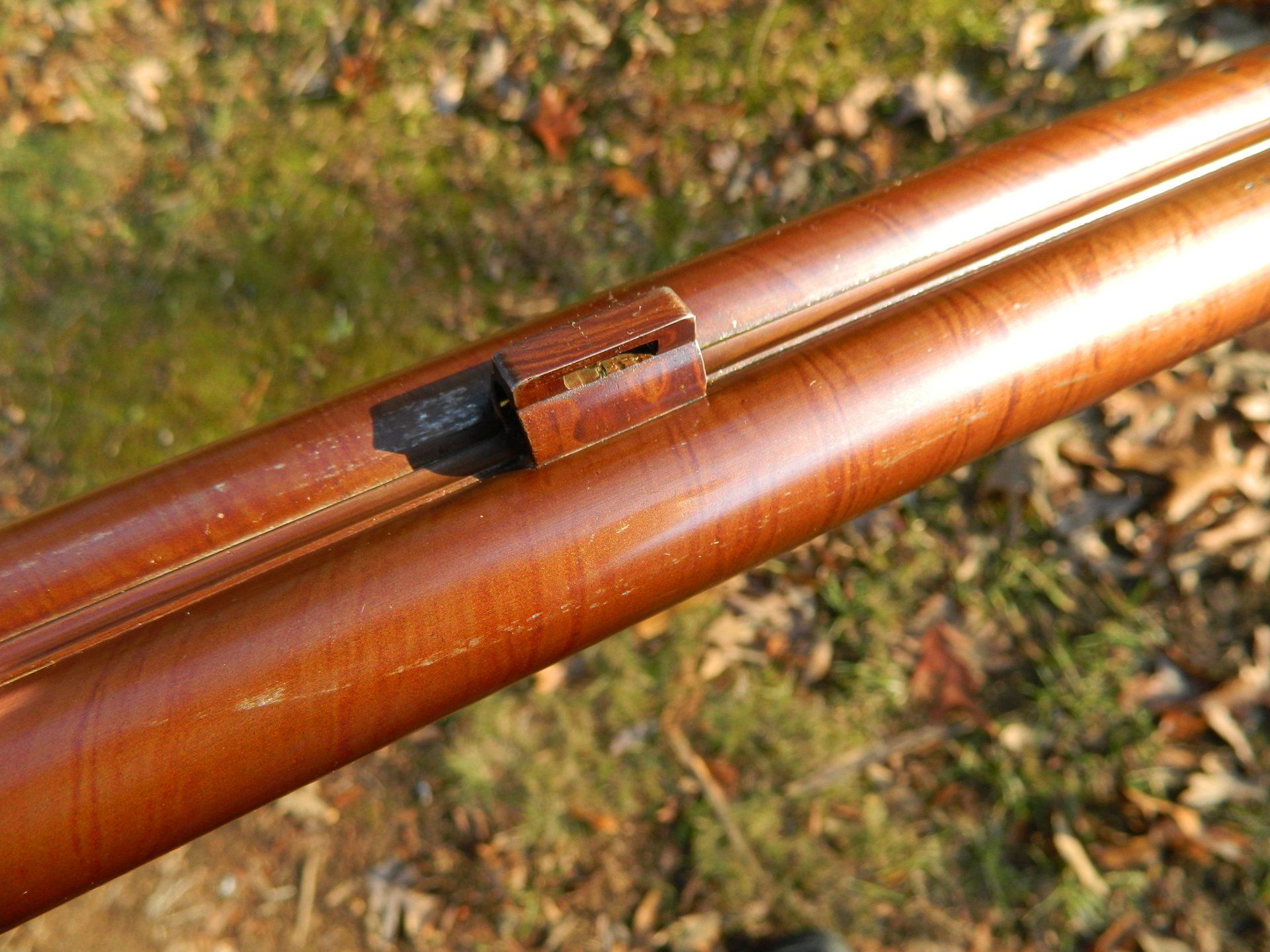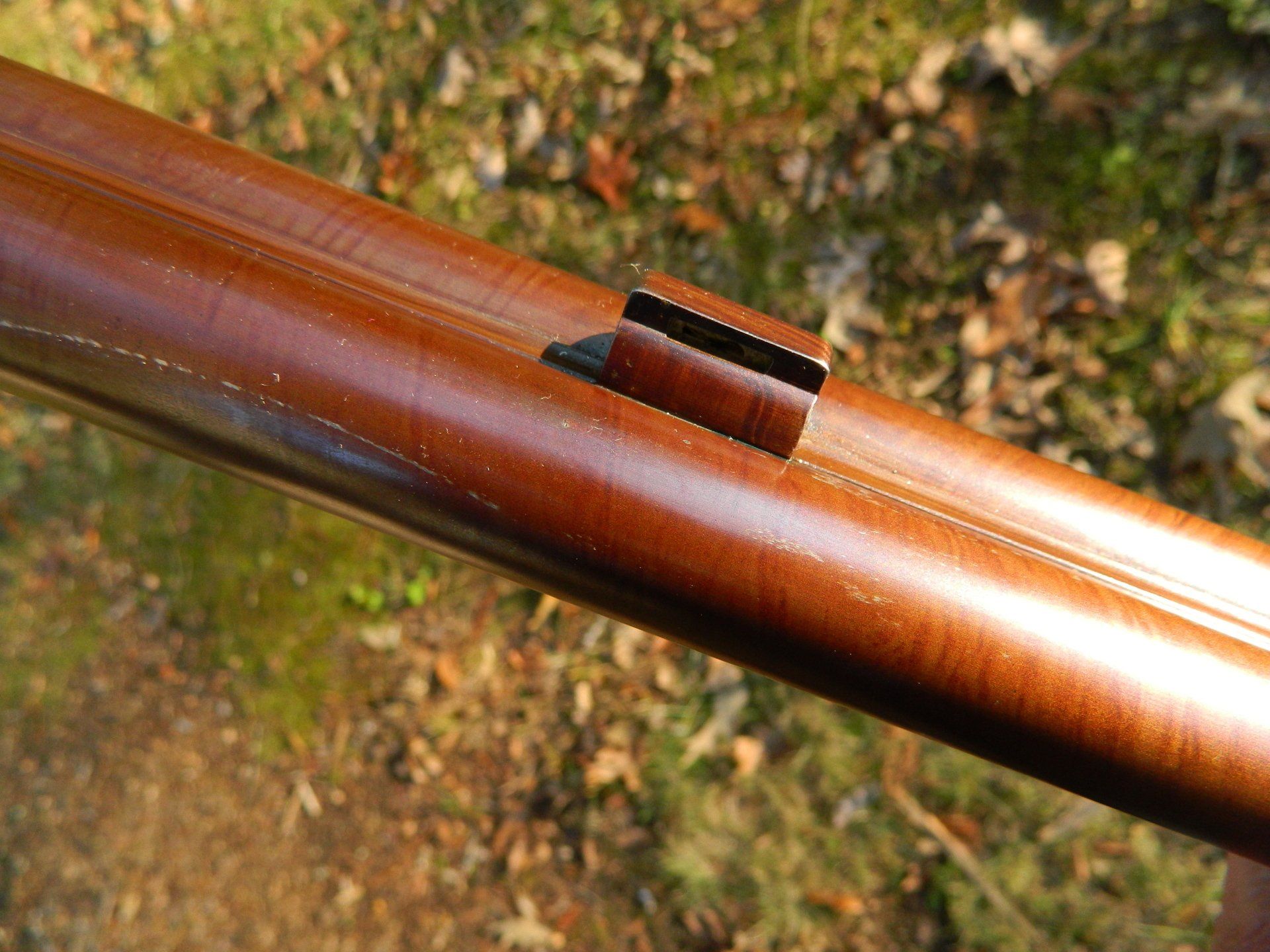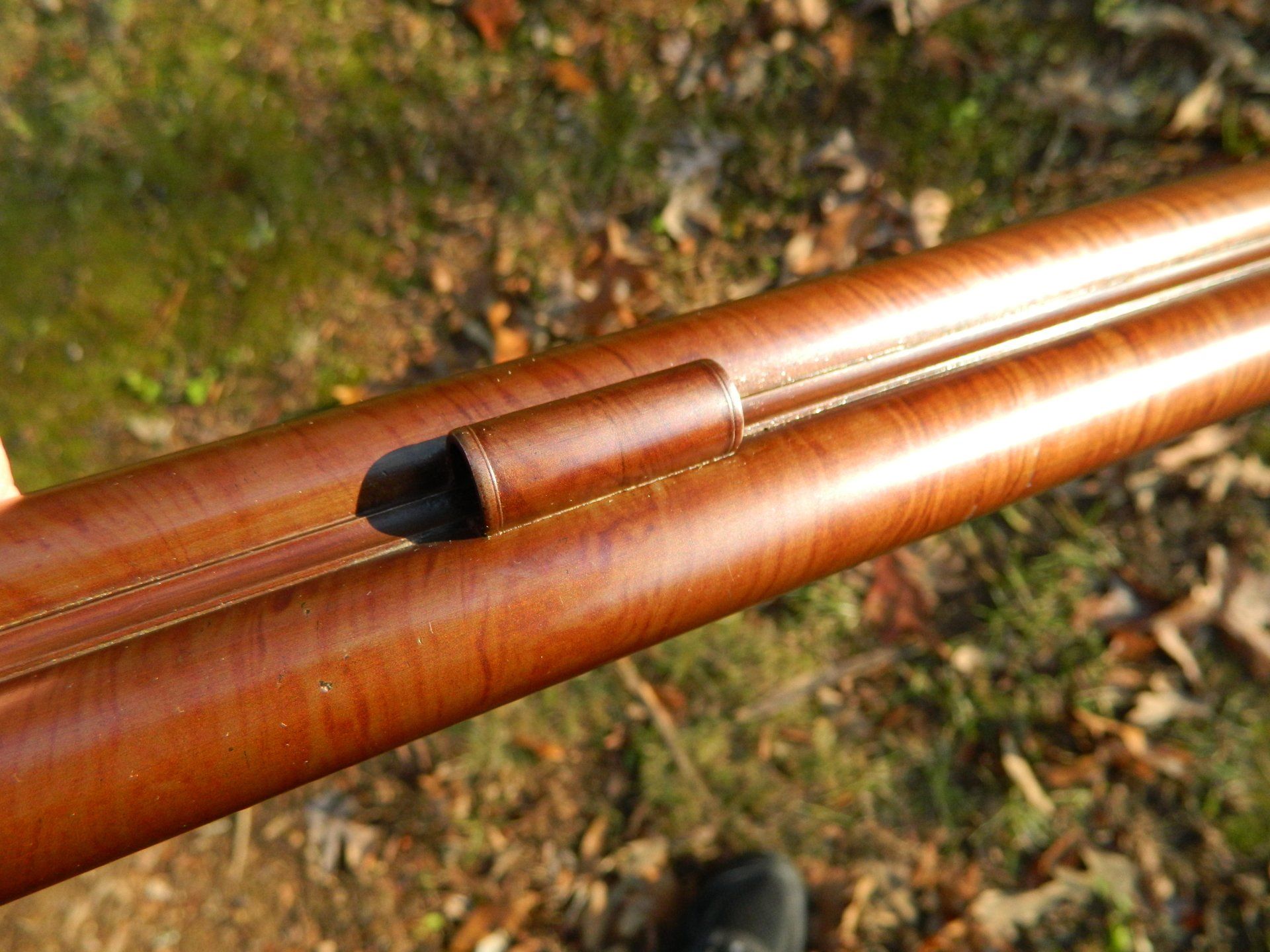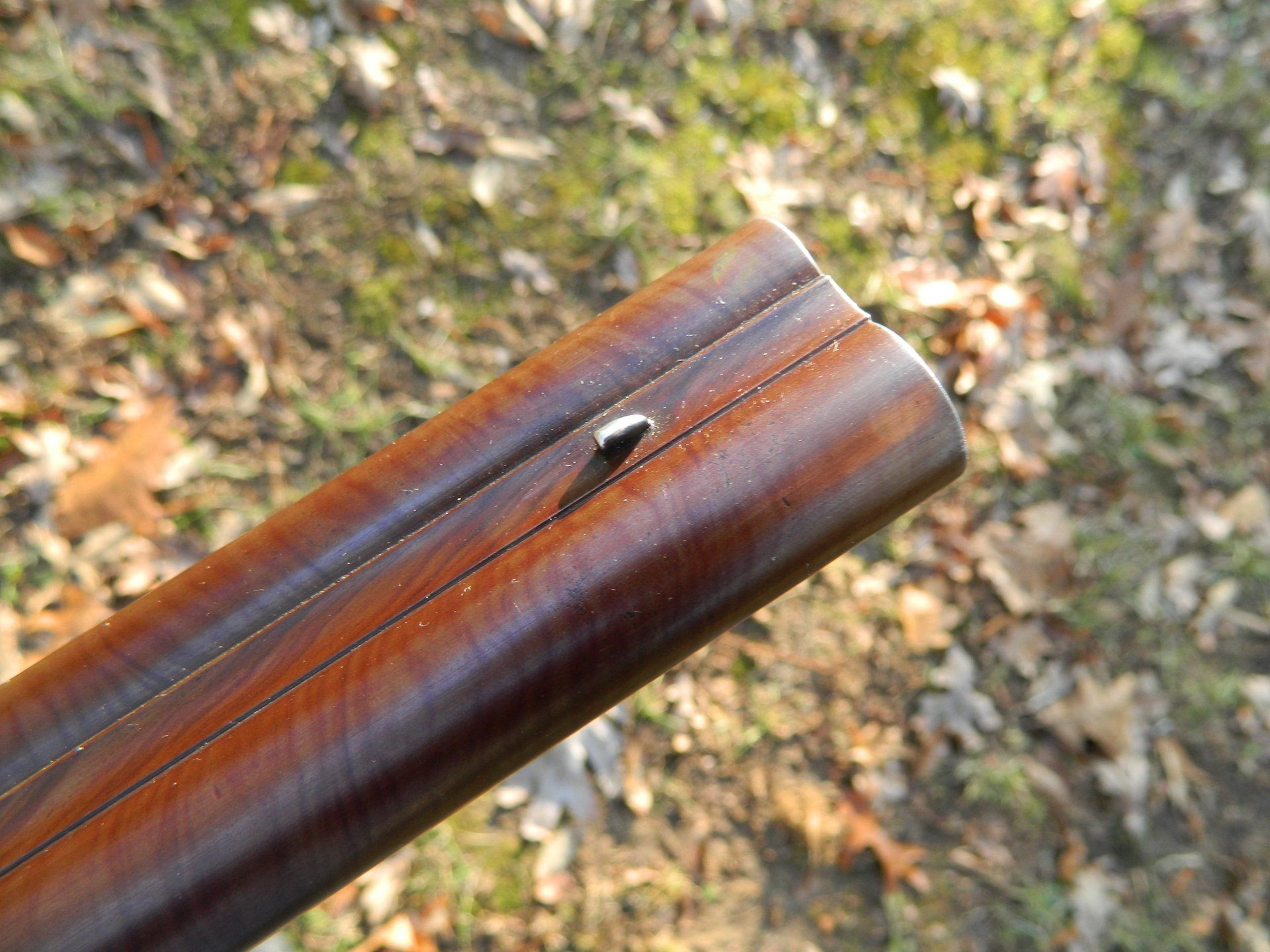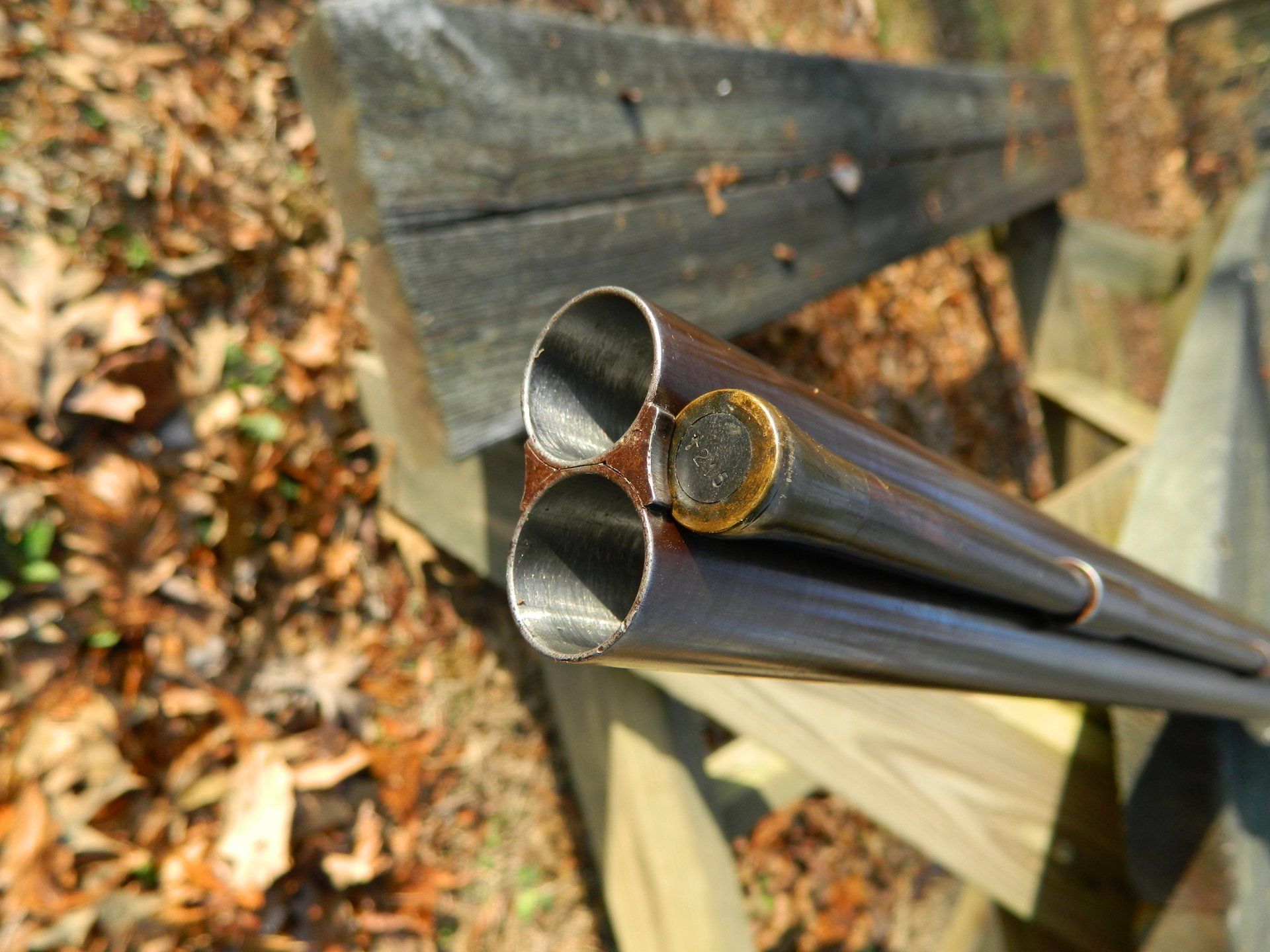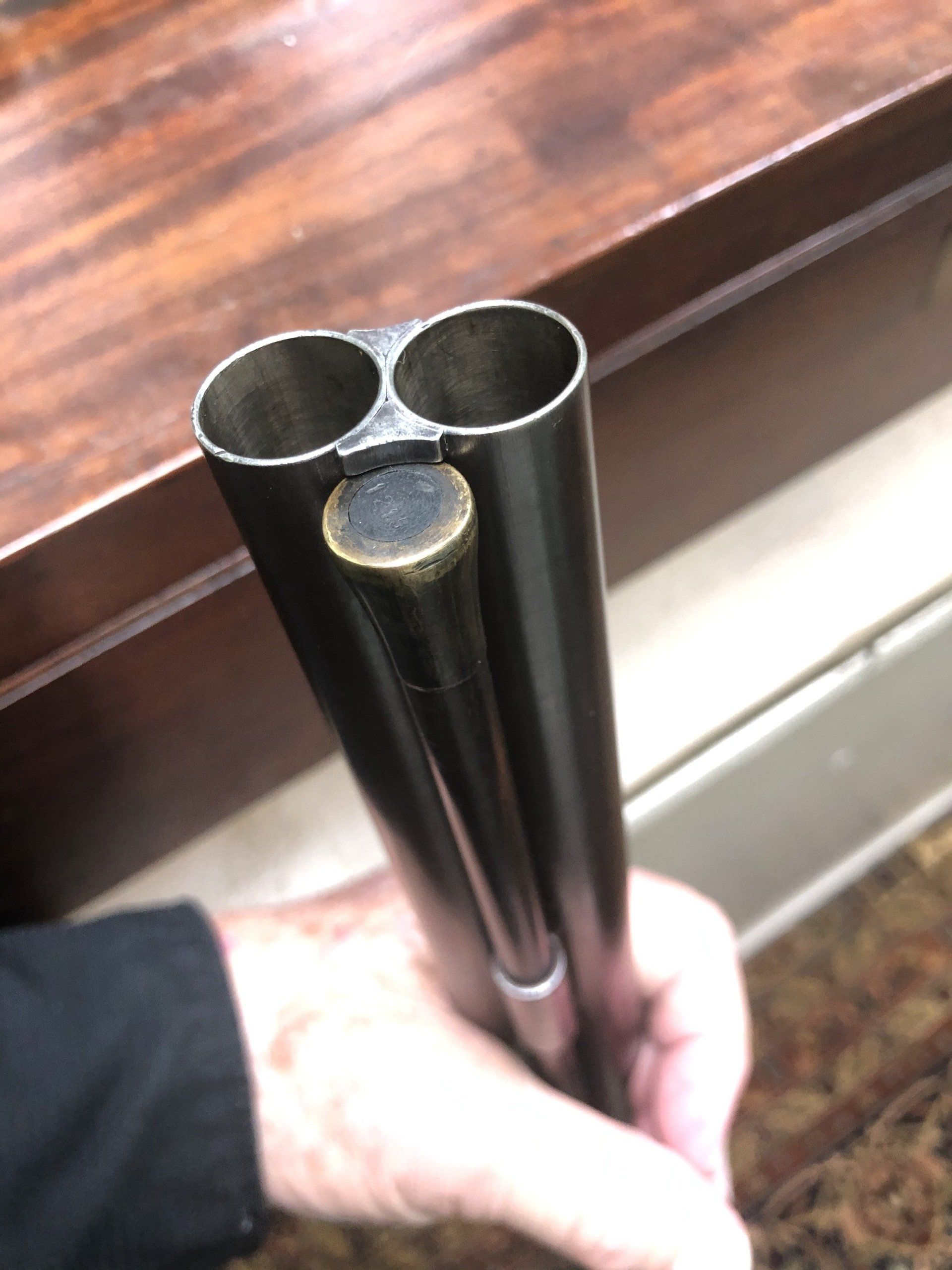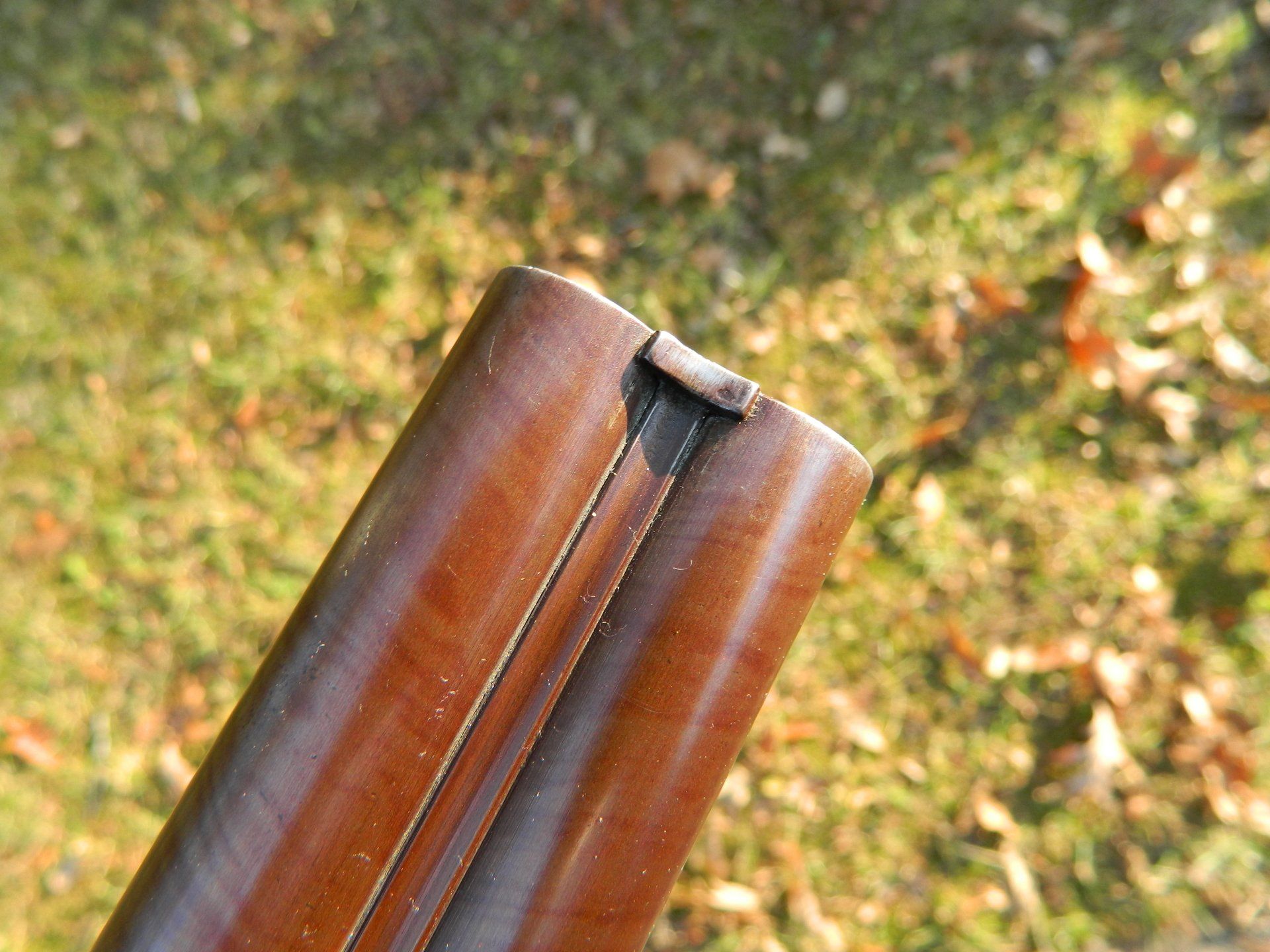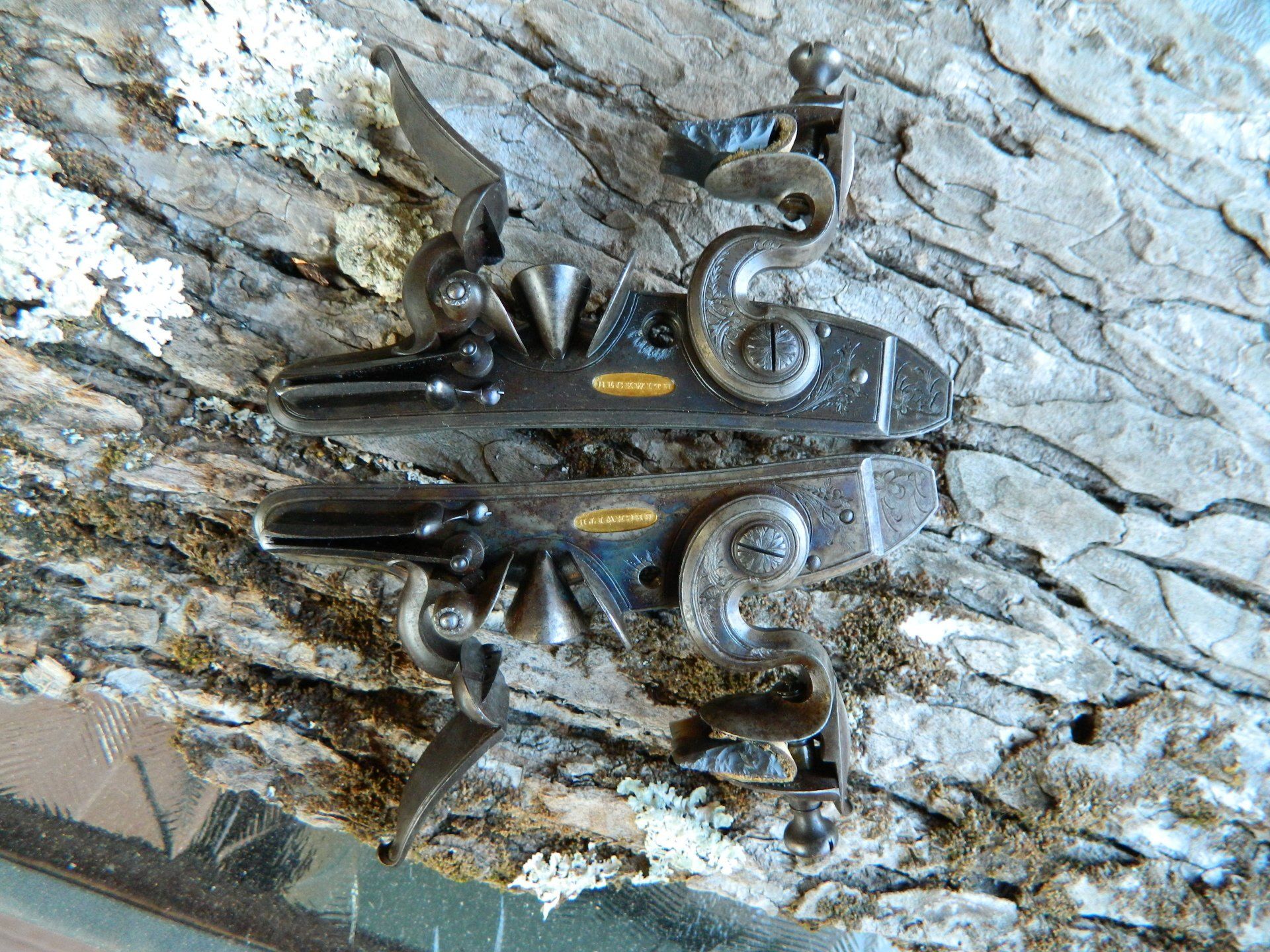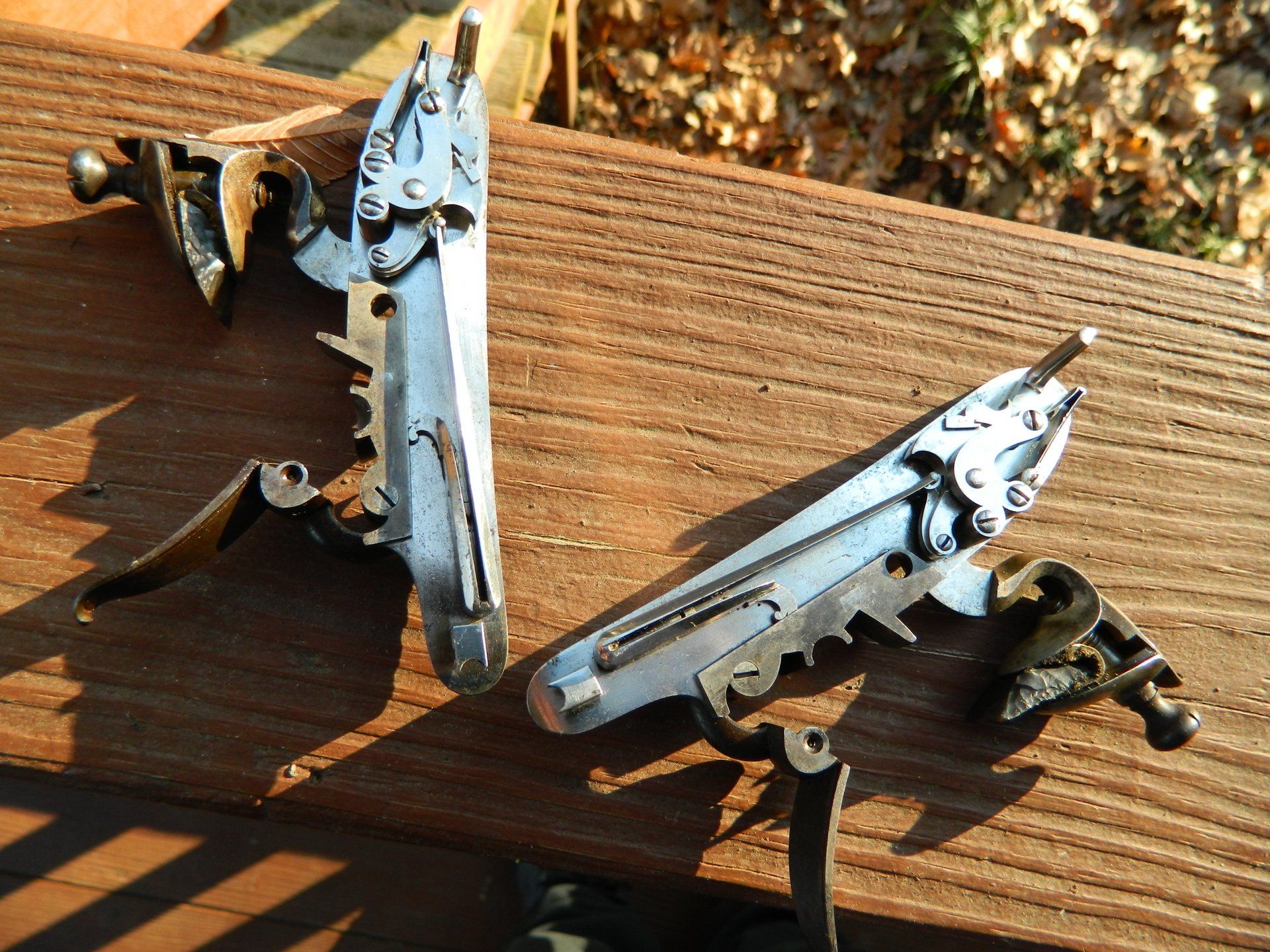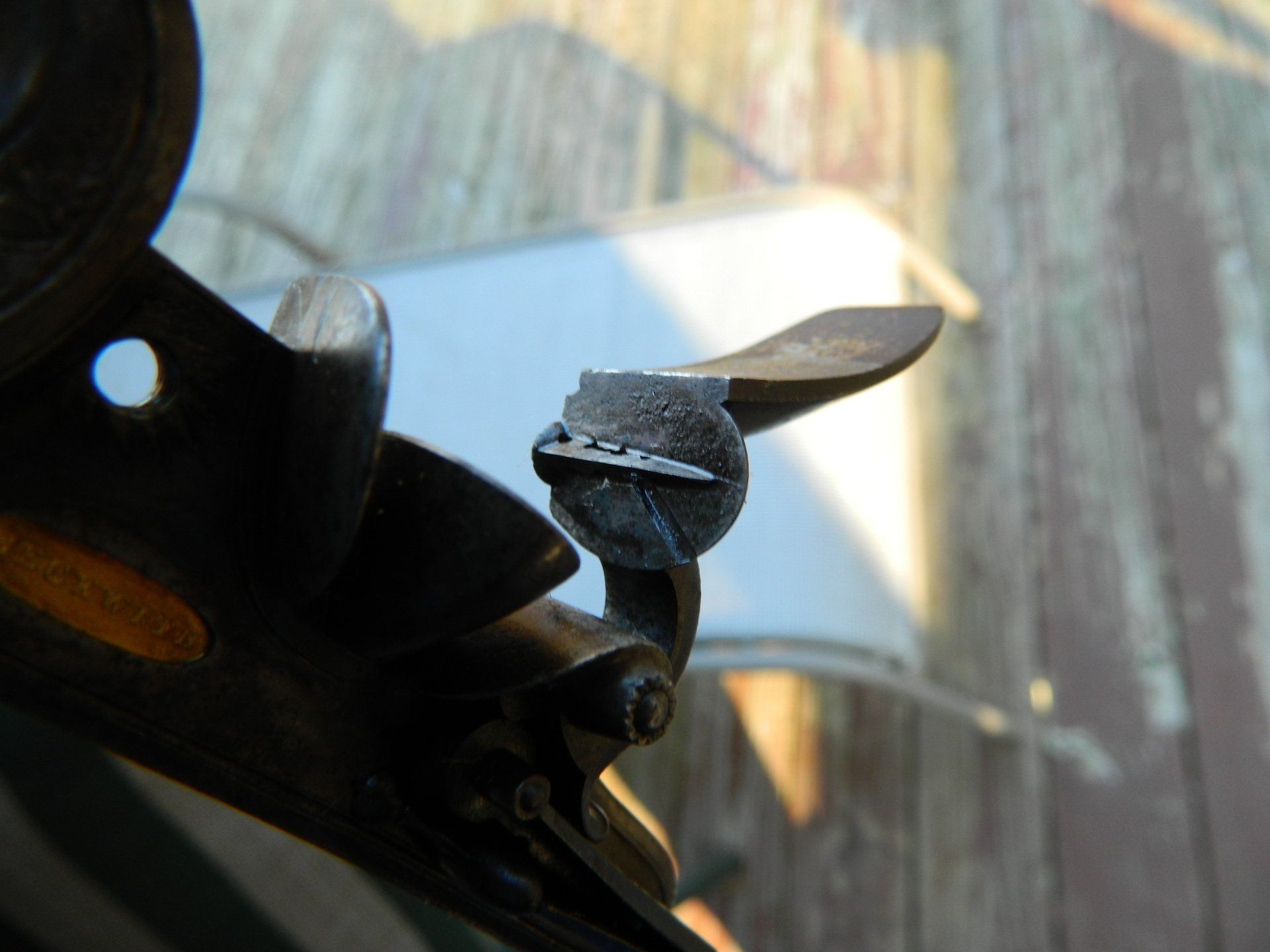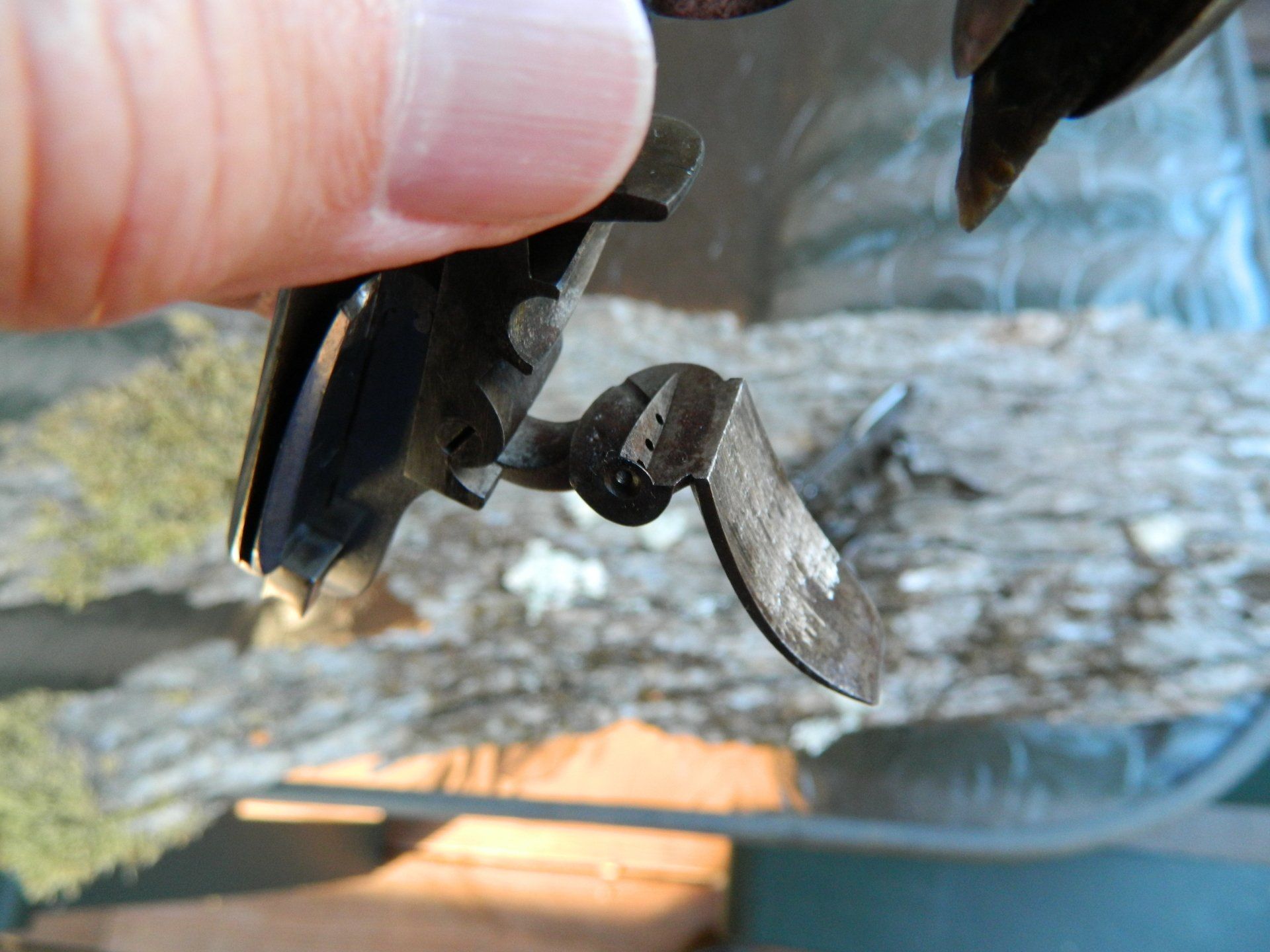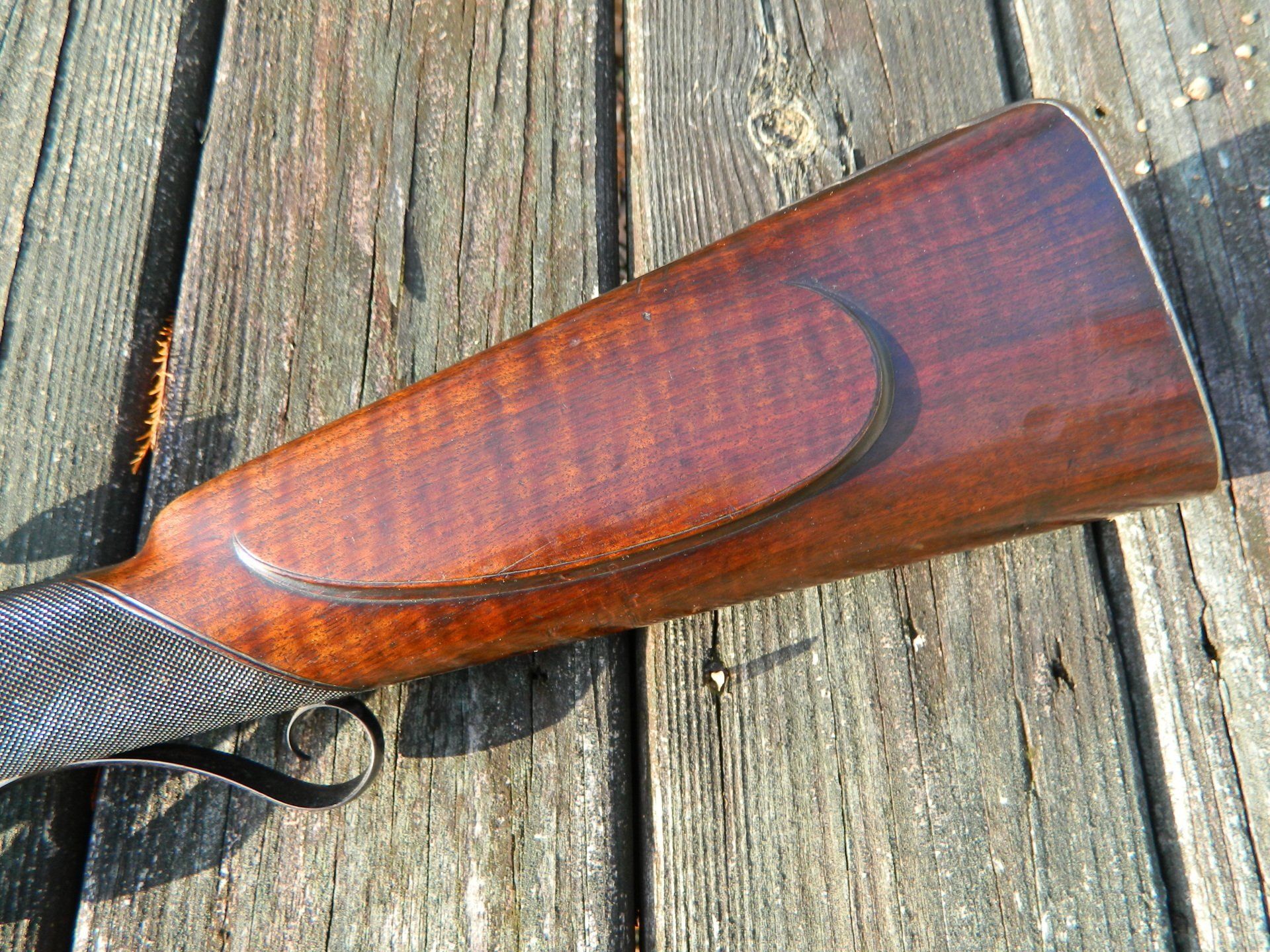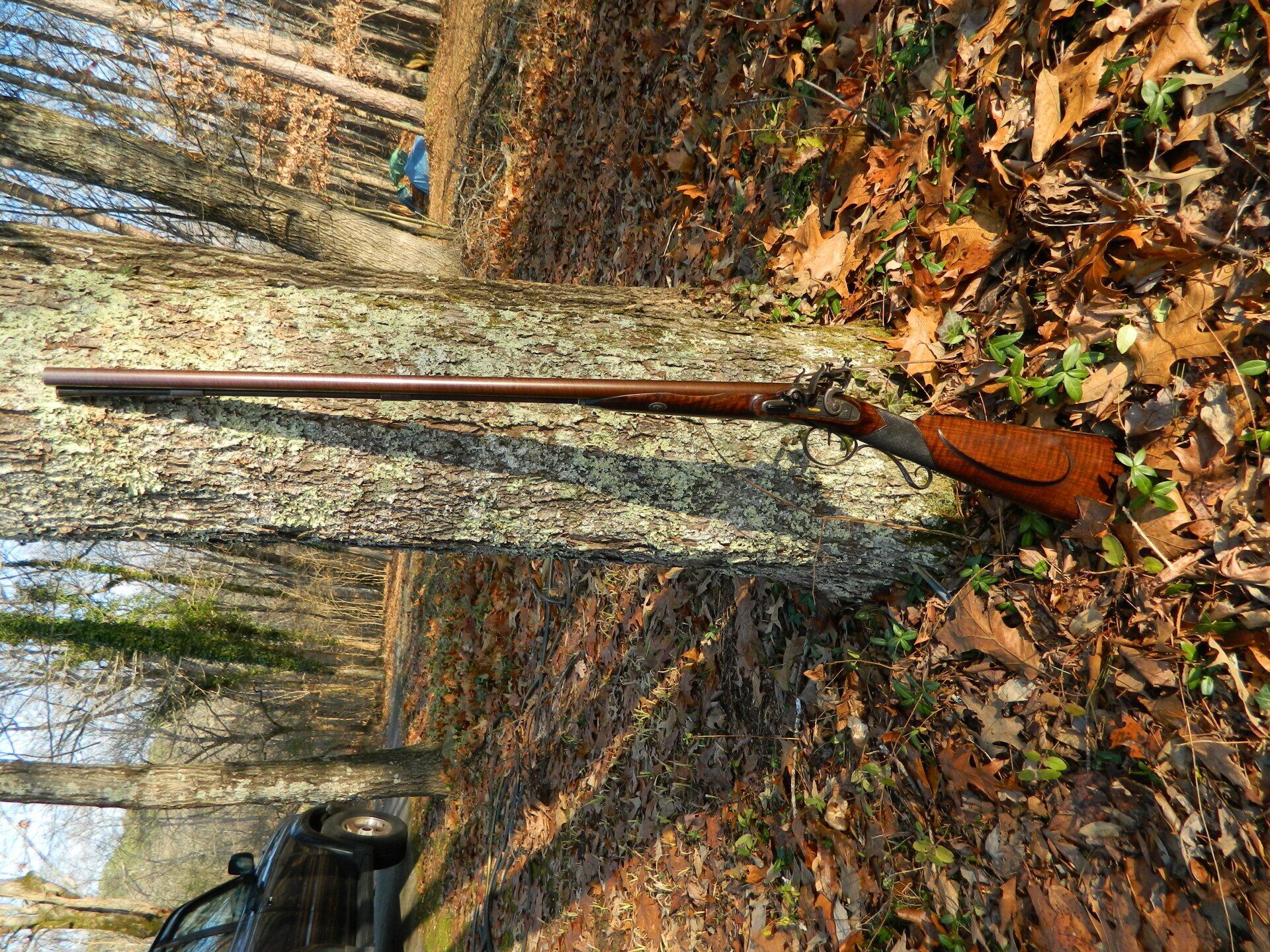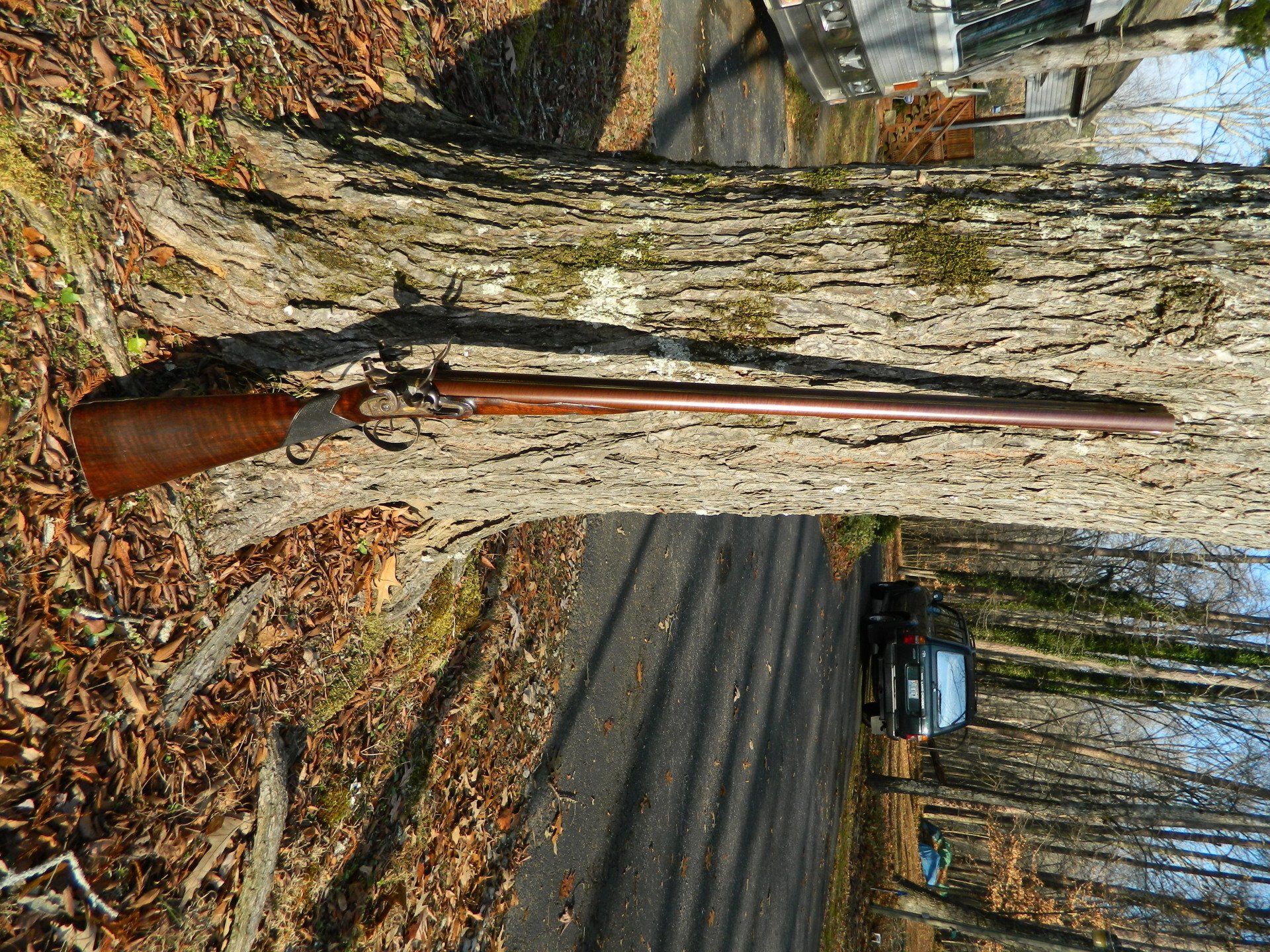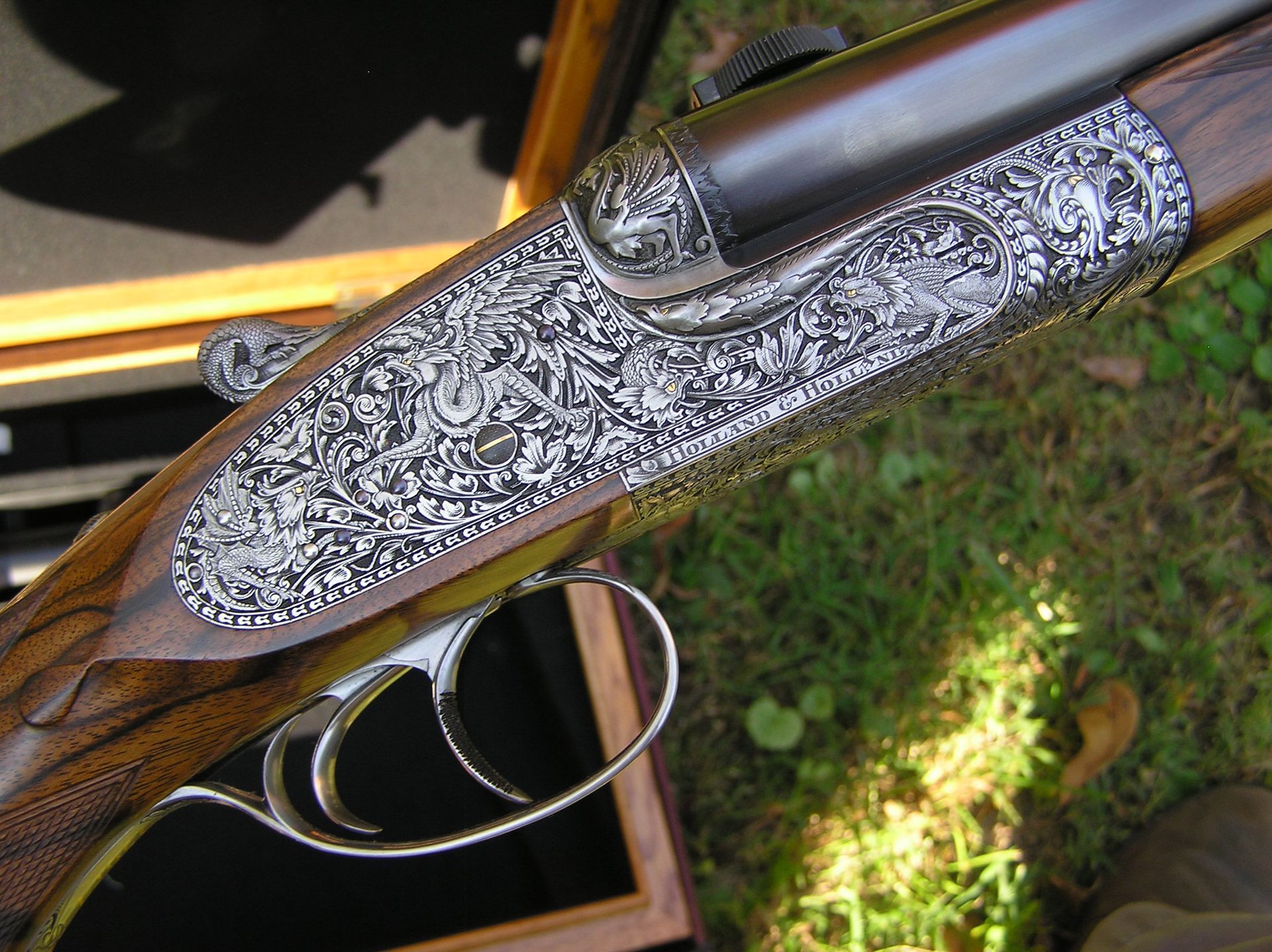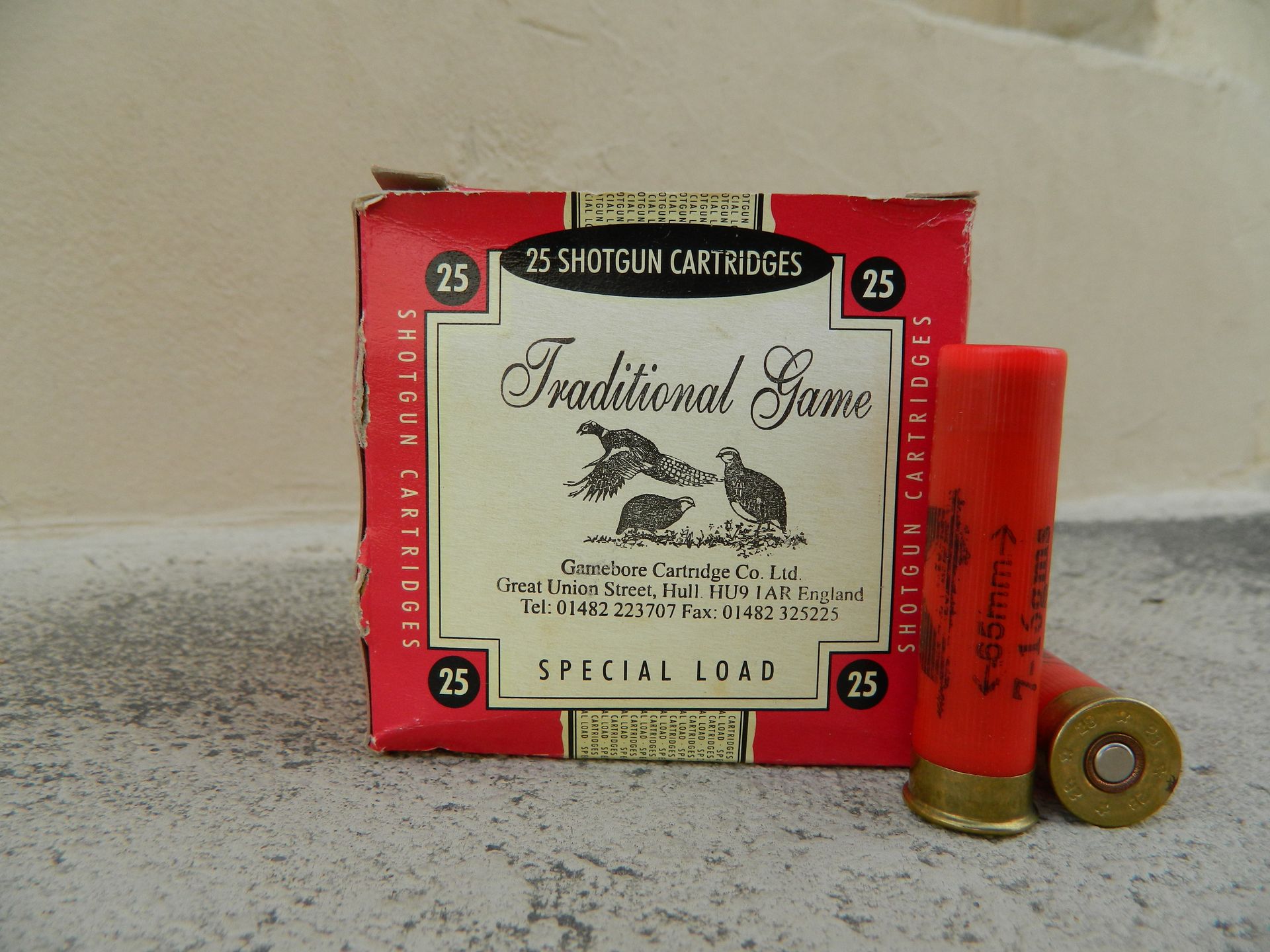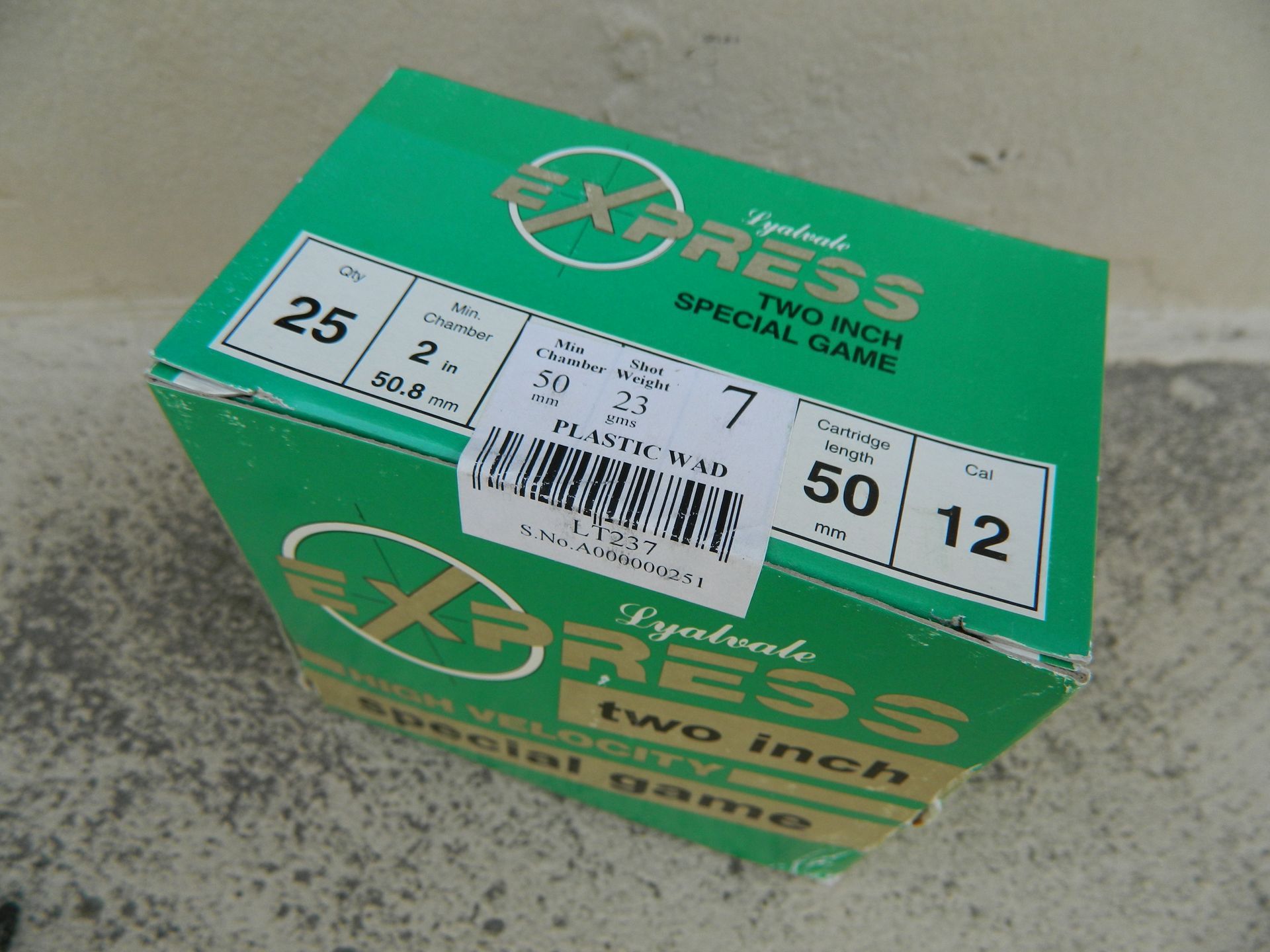William Beckwith, London. Exquisite 15-bore, double-barreled flintlock Sporting Gun, #1215, ca. 1820. SOLD
William Beckwith, London. Exquisite 15-bore, double-barreled flintlock Sporting Gun, #1215, ca. 1820. Weight: 6 ¾ Lbs. Stock Dimensions: 14 ½’x 1 1/8”x 2 3/8”x ¼” cast-on. Superb 30 ½” barrels with absolutely brilliant breeches and bores (.728”/.729”) and retaining virtually 100% of the original brown finish. Original ramrod serial numbered to the gun. Sloped-in breeches, for fast ignition, with two gold bands and platinum lined touch-holes, all showing not a speck of corrosion and no evidence of use. The beautifully engraved and fit up false breech retains most of it’s original hardening colors as well. Immaculate locks of absolutely peerless quality and function throughout retain most of their original finish inside and out. The frizzens have obviously been struck a few times but show no significant wear and no other signs of use and no corrosion whatever to the very complex, and incredibly difficult to fabricate, venting systems with-in the self-priming pan covers. Each lock plate with elongated oval, gold-inlaid, poincon with maker’s name … condition mint. Some flaking of the original brilliant black finish on the iron mounts has occurred, however, much of the finish remains and the engraving is crisp and clean with no significant corrosion anywhere on the gun except some small isolated areas in the bottoms of the pans. The beautifully figured walnut stock, amazingly, retains all of it’s original finish throughout, with a few very minor handling marks, and all of the checkering at the wrist is absolutely perfect as if it had been cut yesterday. You will note the unusual cut-out areas on either side of the forestock right about where the shooter’s hand would be. This was obviously intentional and I can think of no other use for it other than to serve as a tactile register for exact placement of the shooter’s hand. I have never seen that before and any thoughts on that are welcome.
Just forward of the gold inlaid maker’s name on the barrel top rib you will note engraved there the following: “W. B. A. 1820”. This has given rise to some speculation that this gun once belonged to the maker himself, or perhaps a close family member. I have no comment on that other than to note the obvious; that this firearm was held in high regard by owners who held it in high esteem for two centuries, keeping it in a humidity controlled environment, perhaps even on display in such a manner that obviated the accumulation of dents, dings, and the numerous “handling marks” that usually accompany a firearm of this sort.
William A Beckwith apprenticed under Wattel Clark in 1785. He was admitted to the freedom of the Gunmakers Company in 1801. He started his own business at 58 Skinner Street, Snowhill; and worked there until 1861.
Overall a magnificent example of the ultimate British Sporting Gun of the period and almost impossible to find today in this near pristine condition.
